
Trek Domane Vs Emonda Road Bikes ?
Trek Domane and Trek Emonda are two of Trek’s most dominant road bikes. But even though these bikes resemble each other in various ways, they are very different. So, how does Trek Domane vs Emonda compare?
Trek Domane is an endurance road bike that focuses on comfort and better ride quality. In contrast, Trek Emonda is a race road bike that focuses on speed and agility. So, Domane is best for road tours, while Emonda is ideal for on-road racing.
This post shall look at the differences between the two Trek road bikes . I’ll even pick one of their hottest models and compare them. But first, let’s look at an overview of these two Trek road bikes.
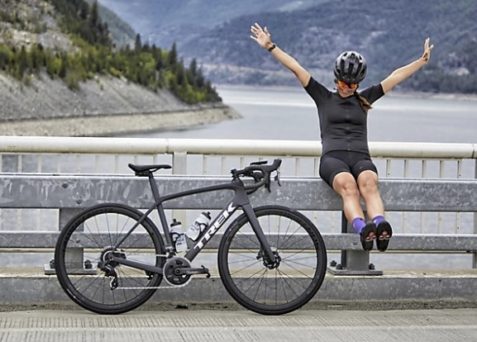
Trek Domane Overview: Who Should Get a Trek Domane?
Trek Domane is a high-end endurance road bike by Trek with more upright geometry, thus perfect for road tours.
Its endurance geometry also focuses more on stability than speed, making it also best for gravel surfaces.
The fact that it has an upright geometry means the bike is suitable for riders with back issues, and the fact that you can ride it on gravel, mainly because of large tire clearance, means it’s a perfect all-terrain choice.
Though this road bike is fast, it’s not very fast, and neither is it very agile. So, don’t get it for competitive racing as you won’t catch a rider riding Emonda.
But if what matters to you most is comfort and better ride quality, then you can get a Trek Domane .
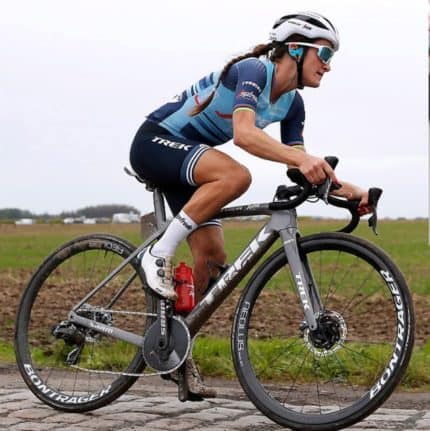
Trek Emonda Overview: Who Should Get a Trek Emonda?
Trek Emonda is Trek’s most lightweight road bike, best for road racing. The race bike enjoys a semi-aero design that decreases aerodynamic drag, making it lightning fast.
Its lighter weight not only makes it a better racer but also a better climber since it’s easy-going uphill with a more lightweight bike than a heavier one.
Emonda focuses on speed and agility more than stability and ride comfort. So, it’s not the best for those with back issues, owing to its race geometry but is generally suitable for beginners who want an easy-to-maneuver, lightweight and quick bike.
Overall, it has a smaller tire clearance, allowing you to fit a maximum tire size of 28c. So, you cannot fit gravel tires, which means you cannot ride it off-road but on-road.
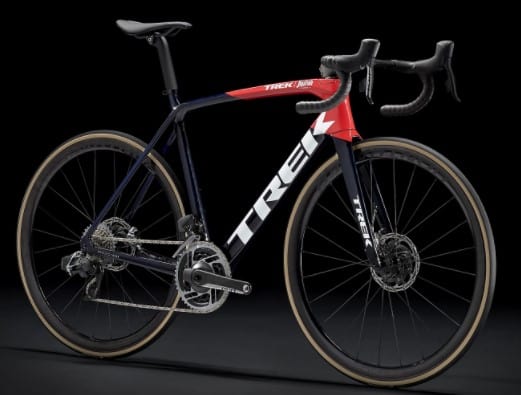
Trek Domane vs Emonda Compared!
Before we can compare the two road bikes in detail, here’s is a table summary of their fundamental differences:
Trek Domane Compared to Emonda in Detail
Let’s break down the above table below:
1. Bike Type
Trek Domane is an endurance road bike, while Trek Emonda is a race bike. The difference is that an endurance road bike is for riding further on different road surfaces, while a race bike is designed for racing on-road.
2. Geometry
Trek Domane is generally an endurance road bike because it enjoys an endurance or sportive geometry, while Emonda is a race bike because it features race geometry.
An endurance or sportive geometry offers you a more upright posture, thus more comfortable, making Domane a good choice for tours or long rides.
A race geometry, in contrast, is more aggressive and focuses more on improved aerodynamics, making Trek Emonda suitable for racing.
3. Bike Weight (Trek Domane Weight Vs Trek Emonda Weight)
The Trek Emonda is Trek’s most lightweight bike as the bike line is ideal for racing. That doesn’t mean the Domane is very heavy, but you are more likely to save some pounds riding an Emonda than a Domane.
Let’s compare Domane SLR9 and Emonda SLR9 (I’ll talk about the two later), for example. Trek Emonda SLR9 weighs only 14.82 pounds, while Trek Domane SLR9 weighs 17.2 pounds.
So, that’s a difference of more than 2 pounds.
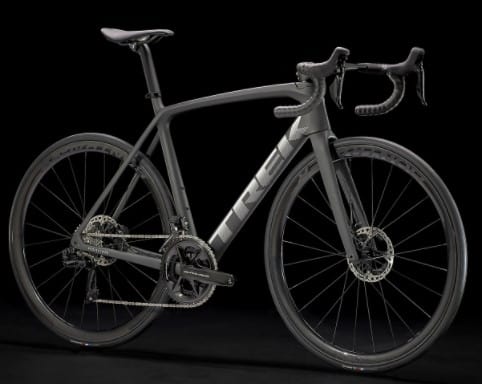
4. Bike Focus
Trek Emonda’s aggressive race geometry makes it more agile, while its aerodynamic design and low weight make it speedy.
So, the bike generally focuses on agility and speed. In contrast, Trek Domane’s relaxed endurance geometry makes it more stable. It focuses more on stability than speed or agility.
5. Terrain Choice
We all know that a road bike is intended for on-road (paved surface use). While that’s the case of the Trek Emonda, Trek Domane is exceptional.
Domane enjoys extra tire clearance, allowing you to fit tires as wide as 38c. Simply put, you can fit gravel tires on Trek Domane. As a result, you can ride Domane on any terrain even though its preference is on-road.
6. Preferred User
Domane’s relaxed geometry makes it ideal for riders with back issues. That’s because you will not have to bend a lot, as the geometry allows you to ride more upright.
Also, the bike’s massive tire clearance coupled with its upright riding position makes it an excellent touring choice.
On the other hand, Emonda’s aggressive geometry makes it best for racers and, to an extent, road climbers.
Remember, this bike is also lightweight, and so its lighter frame makes it beginner-friendly since it’s easy to maneuver.
7. Domane Vs Emonda Speed
These two road bikes are undeniably fast. However, Emonda’s race geometry and low weight make it speedier than Domane.
It’s worth noting that the overall speed of both road bikes depends on where you ride and the riding experience.
If you ride both bikes on smooth roads, the Emonda will be fast, but if you ride them off-road, you may have difficulty maneuvering the Emonda.
And in terms of experience, the more experienced you are, the faster you are likely to ride an Emonda than a Domane on a perfect road.

8. Stability
An endurance geometry enjoys a broader wheelbase, making a bike more stable. So, the Trek Domane is more stable than the Trek Emonda.
Besides, since Domane puts you in a more upright position, you are likely to ride with more stability than someone riding in an aerodynamic position, as is the case of the Emonda.
9. Trek Domane Vs Trek Emonda Cost
Overall, Trek Emonda costs slightly more than Trek Domane. Here’s a table comparing their various 2022 models in terms of price.
Trek Emonda Vs Domane Similarities
Here are the similarities that Emonda and Domane have:
a. Frame Grade
Both Domane and Emonda come in four in four frame grades which are as follows:
- AL : AL represents the most budget-friendly entry-level aluminum bikes. They are the perfect blend between value and performance.
- ALR : ALR represents advanced aluminum frames. These frames are more high-end than their AL siblings, thus costlier. They are lighter and race-oriented, making up the most high-end aluminum road bikes.
- SL : SL represents advanced carbon frames. They are more high-end than AL and ALR, thus costlier than the two. You’ll get the frame on Trek high-end Domane and Emonda bikes.
- SLR : SLR represents the pinnacle of carbon technology. Bikes with an SLR frame are the most high-end. They are the most lightweight and generally suit top-level racers.
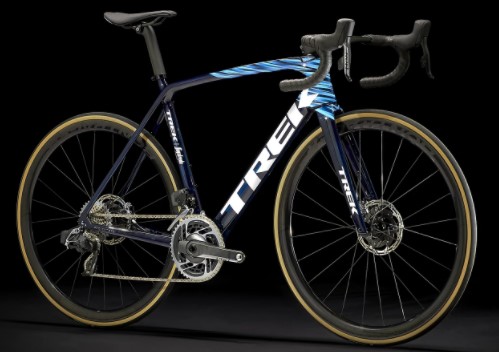
b. Bike Size
Trek employs the same sizing guide for both bikes to ensure they cover riders in all heights. Here is the road bike size chart that Trek uses on Domane and Emonda.
c. Bike Design and Technology
Trek employs similar designs on both bike brands, making them almost identical in appearance. Both models are customizable via Project One, making them suitable for top-level cyclists.
They employ internal cable routing that makes them sleeker and aerodynamic. They are also compatible with DuoTrap S technology which allows you to pair them with your smartphone and track vital cycling stats like speed, pulse, and distance.
Best Trek Domane vs Best Trek Emonda – Domane SLR9 Vs Emonda SLR9
There’s no more straightforward way to compare Domane and Emonda than comparing their most high-end models (SLR9). Here’s how they compare:
- Bike Type and Geometry – Domane SLR9 is an endurance road bike, thanks to its endurance/sportive geometry, while Emonda SLR9 is a race bike, owing to its race geometry.
- Bike Use – Emonda SLR9s race geometry makes it a better racer, while Domane SLR9S endurance geometry makes it a better road touring bike.
- Tire Clearance – Domane SLR9 has a larger tire clearance than Emonda SLR9. Domane SLR’s larger tire clearance makes it an all-terrain choice, while Emonda is only suitable for on-road use.
- Frame – While both bikes have an OCLV carbon frame, their series differ. Domane features a 700 series OCLV carbon, whereas Emonda features an 800 series OCLV carbon frame.
- Drivetrain – Both bikes feature a 12-speed Shimano Dura-Ace drivetrain which promises smooth and efficient shifting and quick acceleration.
- Bike Weight and Load Limit – Interestingly, both bikes have the same load limit (275 pounds), but their weights are different. Domane SLR9 weighs 17.2 pounds, while Emonda SLR9 weighs 14.82 pounds.
- Bike Price – Emonda SLR9 costs slightly more ($12,549.99) than Domane SLR9 ($12,249.99). Primarily, that’s because Emonda SLR9s frame enjoys a higher series (800 series OCLV carbon) than a Domane 700 series.
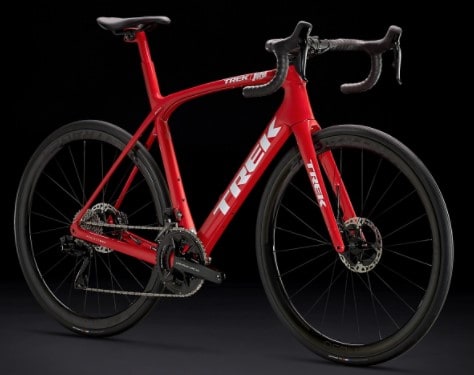
Below is a table comparing the two SLR9 bike models:
People Also Ask
1. what is the difference between trek emonda and trek domane.
Trek Emonda is a race road bike with a lightweight frame and aggressive geometry, while Domane is an endurance road bike with a slightly heavier frame but a more relaxed geometry.
Purpose-wise, Trek Emonda is best for racing, while Trek Domane is best for touring.
2. Is Trek Domane Fast?
Owing to its sleeker look, internal routing, and lightweight frame, Trek Domane is pretty fast. It is, however, not as fast as Emonda has; it enjoys endurance geometry, which promotes a more upright posture.
3. Is The Emonda Comfortable?
The Trek Emonda has a race geometry, which is more aggressive, forcing you to take an aerodynamic position.
That means it’s less comfortable long distance. The bike, however, is more about speed than comfort.
Closing Thoughts on Trek Domane vs Emonda!
While Trek Domane and Trek Emonda have so much in common, they differ primarily in geometry and purpose.
Overall, Domane’s endurance geometry makes it a better tour bike, while Emonda’s aggressive geometry makes it a better on-road racer.
- Trek Domane AL2 Review
- Trek Madone Vs Domane
- Skip to primary navigation
- Skip to main content

Cycling Road
Trek Emonda, Madone, and Domane: Which Road Bike is Right for You
Have you decided on Trek for your next road bike but are not sure which one to get? This article can help. There are 3 categories of road bikes that Trek makes: the Emonda, the Madone, and the Domane. The difference between these three bikes is in their geometry, tube profiles, and weight. You might be wondering why this matters so much – it’s because a bike will feel and perform very differently depending on those three things. So if you want to know which one is right for you then keep reading!

The short answer
– The Emonda is a lightweight race bike for cyclists who like to go fast and ride aggressively. The lightness of Emonda is perfect for climbing because lighter bikes require less effort to get your bike up hills.
– The Madone is a bit heavier than the Emonda but has an aerodynamic design that makes this bike great for flat terrains. The IsoFlow below the Madone’s seatpost absorbs shocks while allowing air to flow better, which makes this bike more comfortable and aero than the Emonda.
– The Domane’s geometry is more upright than Emonda and Madone, making it a great touring bike for long distances. The Domane can fit wider tires and has the IsoSpeed Decoupler on the seat post that allows small deflection which absorbs road vibration, making it perfect if you plan on doing a lot of off-road riding or going over rough terrain.
Domane is also the only road bike in Trek’s range available at a sub $2000 price point, which makes it the best option for beginners. Although, the alloy Domane AL doesn’t have the same IsoSpeed technology.
Okay, so maybe that was too quick. Let’s talk about each Trek road bike in more detail.
Emonda: The Lightweight, Semi-Aero Race Bike
This is Trek’s lightest bike and it is meant for cyclists who like to go fast. The 2021 and later model has a semi-aero design which means that the tubing of this bike has been shaped in order to decrease its aerodynamic drag, making you faster on flat terrain (and on the climb too, if you’re fast enough).
Emonda is great for climbing because it is lightweight so it requires less effort to get your bike up hills.
Why you should choose the Emonda:
– If you like to go fast and ride aggressively, the Emonda is a great choice for you.
– The light weight of this bike will make climbing easier. If you live in an area with lots of hills and long climbs, the Emonda will be perfect for you.
– You want an agile bike with quick handling that makes you feel fast
Why you should not choose the Emonda:
– If comfort is what matters most to you then this bike might not be your first choice. The Emonda’s lightweight carbon layup is so harsh that you will feel every road imperfection. That said, the harshness is not always a bad thing for experienced riders. Plus, you can use 28mm tires or tubeless setup to make it more comfortable.
– The semi-aero design means that while it is lighter, it’s not as fast compared to other aero bikes, including the Madone in flat road. So if you live in a very flat area or hate climbing, you might want to choose the Madone instead because the weight penalty won’t matter to you.
– You are looking for a bike that can handle rough terrain since the Emonda is not built for this. Go for Domane or Trek’s gravel bike, Checkpoint.
Madone: The Fast, Aerodynamic Race Bike
The Madone is Trek’s most popular road bike model and it has an aerodynamic design which makes this bike great for flat terrains. It has the IsoFlow technology which helps absorbs road vibration and allows a better airflow to reduce drag.
The geometry of the Madone is the exact same as the Emonda. This bike has a bit more weight but this will be unnoticeable when you’re not going uphill, making this bike great if speed matters to you and you live in an area with lots of flats.
Why you should choose the Madone:
– You ride in flat or rolling terrains and want a fast bike that is comfortable
– You are looking for an aerodynamic advantage, especially on flat roads
– You are looking for a stiff bike for sprints
Why you should not choose the Madone:
– If you ride long climbs. Yes, descending with a Madone is a blast because of the aero benefits and stability when slicing through the wind, but the climb won’t be as much fun compared to an Emonda. (Not that it’s not doable.)
– You’re looking for an all-around bike that is quick on the climb and still relatively fast on the flat. The Emonda with its semi-aero profile is built exactly for this. Road Bike.
– You want a bike that can handle rough terrain, then the Madone might not be right for you because even with the IsoSpeed it is still a stiff bike. The Domane is for you.
Domane: The Long Distance Endurance Bike That Can Handle Rough Terrain
The Domane’s geometry is more upright than the Emonda and Madone making this bike perfect if you want to ride long distances. Unlike Emonda and Madone, the geometry of Domane focuses on stability.
The IsoSpeed Decoupler combined with large tire clearances means that you can even use Domane as a gravel bike if you want.
Why you should choose the Domane:
– You ride long distances . Though, keep in mind that you can still use Emonda and Madone for long-distance rides as most people do. Domane is just on a different level in terms of comfort.
– You want a bike that is comfortable and can handle rough terrain like gravel roads or even trails.
– You are looking for an upright geometry that will make your back less tired after many hours of riding.
– You want bikes with an integrated storage compartment. Useful for mini-tools, tubes, and snacks for long rides.
Why you should not choose the Domane:
– If speed is what matters most to you, then this bike might slow you down compared to Emonda and Madone. That said, it might be worth sacrificing a bit in terms of pure speed because the advantages are much more noticeable on long rides.
– You want light bikes. Domane is rather heavy, even heavier than the Madone.
– You want an agile bike. As an endurance bike, Domane’s geometry makes it a stable bike, but stability and agility is on the opposite side of the scale. It’s great for long-distance riding, but not what people prefer in racing bikes.
What kind of rider are you?
If you’re a beginner and not sure yet, I suggest that you choose the Emonda because it’s more versatile and offers better overall performance. The lightweight and agility of Emonda can be very addictive. Madone is a fast bike, but you probably won’t be able to appreciate its aero benefits just yet because most beginners ride at a speed where air resistance is not the significant force.
If you’re an experienced rider and are trying to get into the top 10 or even “KOM” on Strava flat segments, maybe Madone is for you. If you race in criteriums, then Madone might give you an advantage.
Normally, the comfort or stiffness of the bike is another factor for people when choosing between lightweight or aero bikes, because most aero bikes are harsh to ride. But Madone actually feels comfortable and smooth for an aero bike thanks to its IsoFlow technology. In fact, Madone might feel more comfortable than the Emonda.
Finally, choose Domane if you want an all-terrain bike or if your back really can’t handle the more aggressive Emonda and Madone.
Reader Interactions
October 4, 2022 at 2:36 am
this is great information! Unfortunately, about a year late, however ha ha. I bought my Emonda about a year ago and finding that perhaps a domane would be better suited for my taste and physical preference (50+ :-). I have a question, however… Is it possible to make the Emonda more “upright“ to favor the domane upright position? Perhaps with a different stem?
October 5, 2022 at 2:42 am
The Domane has about 10-20 mm shorter reach and 30-40 mm higher stack than an Emonda, maybe more in some different sizes. You can use a 20 mm shorter stem and flip it to a positive degree angle to get about the same stack and reach as the Domane. If you already use a short stem (90 mm or shorter), try changing the handlebar to one that has a shorter reach like the Zipp Service Course 70 with has a 70 mm reach compared to the Bontrager handlebars that your Emonda might come equipped with, which has a 100 mm reach.
October 16, 2022 at 7:54 am
Thanks for very helpful article – I am just in the middle of exactly this decision. I am leaning towards the Émonda as my new road bike. I have a slight hesitation on the comfort side. I ride mostly between 60 and 120 km, but will sometimes be doing longer rides up to 200 km. I am 55 years old but very active. I have a lot of hills around me and want to get better uphill so that’s a big attraction, and I am also pushed to keep up with the club I ride with. Do you think those kinds of distances would be ok. For info I have previously been riding a Lapierre Sensium, so the wider tyre on the sensium will certainly help to some degree. Also, I have a checkpoint as well which I love and would continue for gravel and bike packing etc.
November 10, 2022 at 1:27 pm
Thank you for this article. Came right on time. I saw a Domane that I really liked and I was about to purchase it however it did seem kind of heavy. Based on this article I think the Emonda would be the best for triathlon training.
July 8, 2023 at 12:05 am
I would love a madone. But at 55, I’m not sure it would make much difference in my riding. I have a Domane and slammed the stem, made changes to the angle of the bars, got continental tires and try to ride more Aero. It helped and I’m faster but I doubt that the cost difference between domaine and madone could be justified.
Leave a Reply Cancel reply
Your email address will not be published. Required fields are marked *
Save my name, email, and website in this browser for the next time I comment.
This site uses Akismet to reduce spam. Learn how your comment data is processed .
Domane vs Emonda: Which Trek Bike Is Right for You?
When you’re shopping for a bike, you have a lot of options to choose from. You can buy a bike off the rack, or you can purchase one that’s customized to your needs. But which is the best option for you? This guide will compare the two most popular Trek bikes: the Domane and the Emonda. We’ll discuss their features, advantages, and disadvantages and help you determine which one is right for you.
Domane and Emonda Bikes
The Trek Domane and Emonda bikes are both excellent options for cyclists looking for a lightweight, incredibly durable bikes. The Domane is designed with a more aerodynamic frame, making it the perfect choice for riders who want to achieve high speeds. The Emonda, on the other hand, is built for comfort and stability. Both bikes come with Shimano components, so you can be sure they will provide reliable performance.
Overview of the Domane and Emonda Bikes
If you’re in the market for a new mountain bike, there are a few things to consider. One of the most important factors is the riding you plan to do. If you’re mainly going to be touring on hard-packed trails, then a bike like the Domane would be a great choice. For more aggressive riders, the Emonda may be better suited.
In terms of weight and dimensions, both bikes are comparable. The Emonda is taller and has a longer wheelbase than the Domane, but they both share almost identical geometry. That means that no matter which one you choose, you’ll easily tackle virtually any terrain.
One other thing to consider is the price. If you’re on a tight budget, the Emonda may be an ideal option. It costs less than the Domane and still offers all the same features and performance. Conversely, the Domane would be your best bet if money is no object. It’s considerably more expensive than the Emonda but has more bells and whistles, including a higher-quality frame and fork.
Define the Domane and Emonda Bikes.
The Trek Domane and Emonda are two of the most famous mountain bikes on the market. They’re both high-quality, durable machines that will take you to trails worldwide. But which one is right for you?
These bikes are built for serious cyclists. They’re not for beginners or people who are new to mountain biking. If you need help riding a bike, don’t buy a Domane or Emonda.
On the other hand, if you’re an experienced cyclist who knows what you’re doing and is looking for a challenging trail ride, then the Domane and Emonda are the perfect bikes for you.
Each bike has unique features that make it better suited for different types of riders. The Domane is faster and more aggressive than the Emonda, but the latter can handle rougher terrain better.
If you want a versatile bike that can do it all, then go with the Domane. It’s faster, more powerful, and easier to control than the Emonda.”
Features That Both Bikes Have In Common
Both bikes have a frame made of aluminum and come with Shimano components. The Domane also has an electronic drive system, while the Emonda does not. Both bikes have a geometry designed to perform well on varied terrain.
The Domane has a longer wheelbase and is more stable than the Emonda, which makes it better for rough roads or long climbs. The Emonda is faster than the Domane but less stable, making it better for racing or flat terrain.
Key Differences Between The Two Bikes
The two bikes that we are comparing are the Domane and the Emonda. The Domane is designed for riders looking for a versatile bike that can handle road and mountain biking. The Emonda, on the other hand, is built specifically for downhill riding and is lighter weight than the Domane.
Here are some key differences between the two bikes:
The Domane has a longer wheelbase than the Emonda, which makes it better suited for long rides.
The Emonda has front and rear suspension, which makes it better suited for downhill riding.
The Domane has a Shimano drivetrain, while the Emonda uses SRAM gears.
The Domane comes with quality tires, while the Emonda comes with wider tires making it better suited for off-road riding.
Features of the Domane Bike
Frame design and materials.
The Trek Domane is a high-end mountain bike that offers a lot of features for cyclists who are looking for the best performance. It has a frameless design and an alloy frame, making it very durable. The Domane also has front and rear suspension, which makes it easy to ride even on rougher terrain.
Trek also uses Shimano components, so you can be sure you’re getting the best possible performance when buying a Domane. Additionally, the bike comes with Shimano hydraulic disc brakes and Tektro mechanical disc brakes, providing excellent stopping power in any situation.
If you’re looking for a top-of-the-line mountain bike that will provide excellent performance, the Trek Domane is worth considering.
Suspension system
The Domane bike suspension system is one of the most advanced on the market. It features a dual-function damper that allows compression and rebound damping, giving you a great range of adjustability. Additionally, the system has an auto-level feature that ensures your ride is always comfortable. The Domane also has several other features, like a water bottle holder and an alloy frame that makes it sturdy.
So if you’re looking for a bike that can handle everything from long rides to quick commutes, the Domane is worth considering.
Brake system
The Domane Bike-Brake system is a standout feature on the Trek Emonda. It’s a mechanical disc brake system with rotors and pads to provide reliable stopping power. The system’s design also allows for easy adjustment and maintenance so that you can stay on the road worry-free.
Other features that make the Trek Emonda a good choice include its lightweight frame, wheels, and comfortable ride. The Emonda is also versatile, with advanced geometry that makes it efficient and stable when cycling in all conditions.
Tire size and compatibility
The Domane is a versatile mountain bike that is perfect for riders who want an XC bike with a bit more downhill ability. The Domane’s 27.5-inch wheel size and 10-speed drivetrain make it an excellent choice for riders who want to mix things up on the trails. The Emonda is another great option if you are looking for a more downhill-oriented mountain bike. It has a longer wheelbase and more aggressive geometry, perfect for technical downhills and rough terrain. Additionally, the Emonda is compatible with 29er wheels, giving you, even more versatility when choosing the right bike for your needs.
Drivetrain components
The Domane Bike-Drivetrain components are both incredibly durable and efficient. The Shimano Deore 11-speed drivetrain provides various gears for varied terrain. The Emonda Rear Hub is also reliable and easy to shift, making it perfect for long rides. The Domane has a powerful Bosch Performance CX motor that provides plenty of power when needed.
Features Of The Emonda Bike
This Trek Emonda bike has a Shimano Deore drivetrain and a Reynolds 853 aluminum frame. It’s available in men’s, women’s, and kids’ sizes.
The bike has an adjustable saddle, disc brakes, and fenders. It is also lightweight and easy to ride. One downside of the bike is that it does not have a back rack or cargo carrier.
The Emonda suspension system is designed to provide a smooth and comfortable ride. It has adjustable shock absorbers, making it possible to fine-tune the suspension for your riding style. The bike also features rider-specific geometry specifically tailored to fit your body. The frame also features internal cable routing, making maintenance and repairs easier.
The Emonda bike-brake system is one of the most advanced available. The system uses electronic sensors to detect when you are braking and then uses an adjustable brake lever to apply the required pressure to the brakes. This eliminates the need for constant adjustments of your brake pads, which can be a hassle if you’re riding in a hurry.
Another feature of the Emonda bike-brake system is its ability to stop your bike when you reach a standstill automatically. This is useful if you want to stop at a red light or if you’re waiting for someone else on a busy road.
The Emonda bike-brake system has several different adjustment settings, so it can be tailored to fit your needs perfectly. You can also use either handbrakes or rim brakes, which allows you to choose whichever type of braking system works best for you.
The Emonda is Trek’s most advanced mountain bike to date. It has several features that set it apart from other mountain bikes on the market. The bike has a carbon fiber frame and fork, making it strong and lightweight. In addition, the bike also has a suspension fork that provides comfort when riding over rough terrain.
In terms of tire size, the Emonda comes with 26-inch tires. This is slightly smaller than other mountain bikes on the market, but it allows for a more nimble ride. Additionally, the bike is compatible with most cycling shoes, so you can put in whatever type of shoe you prefer.
The Emonda bike drivetrain is composed of a Shimano Deore drivetrain with a SRAM Rival 2×10 drivetrain. The Deore and Rival 2×10 drivetrains are equipped with Shimano 105 gears, allowing various gearing options. The Emonda also features an aluminum frame, which provides a lightweight and durable ride.
Domane vs Emonda: Performance Comparison
The two most popular Trek mountain bikes are the Domane 9.9 and the Emonda HB30. Both bikes offer excellent performance, but which one is right for you? To help make the decision, we’ve put them head-to-head in several categories to see which is stronger.
Bike Weight
The Domane 9.9 is significantly heavier than the Emonda HB30, making it better suited for riders who are looking for a more stable ride.
Comfort/Suspension
Both bikes have excellent comfort and suspension, but the Domane 9.9 wins this category due to its heavier weight and greater stability.
Gears/Brakes
The Emonda HB30 has better gears and brakes, making it better suited for downhill riding or technical sections of the trail. However, the Domane 9.9 has a wider range of gears, making climbing hills or traveling farther on long rides easier.
Compare the performance of the Domane and Emonda bikes
If you’re looking for a versatile bike that can take on any terrain, the Domane and Emonda offer different but equally impressive performances.
The Domane is designed for speed and climbing, while the Emonda is designed for comfort and versatility. Both bikes are tough and have plenty of features to make them great long-ride options. However, if you’re looking for a specific type of ride or need more help with stability when riding off-road, the Domane might be a better choice.
Both bikes are available in varying frame sizes, so there’s sure to be one that fits your needs. Additionally, both bikes come equipped with Shimano Di2 groupsets, hydraulic disc brakes, and 9-speed SRAM shifters – making them versatile all-rounders.
Ultimately, it comes down to your type of rider – if you’re focused on speed and climbing abilities, the Domane is perfect if you’re more interested in having an overall comfortable experience while out cycling, the Emonda may be a better option for you.
Discuss the strengths and weaknesses of each bike.
The Trek Domane and Emonda are two of the most popular mountain bikes on the market. Both bikes have strengths and weaknesses, which may affect your decision to purchase one or the other. Here is a closer look at each bike’s strengths and weaknesses.
The Domane and Emonda are very well-built bikes, withstanding much abuse. They’re also easy to ride, making them great options for beginner riders.
Both bikes are capable of reaching high speeds on mountain trails. They’re also stable at high speeds, making them good choices for experienced riders who want an easygoing bike that can handle some fast sections.
Both bikes are comfortable for riding long distances. They’re also relatively lightweight, which makes them manageable on long rides.
Weaknesses:
The Domane is slightly more expensive than the Emonda, which may be a disadvantage for some users. Additionally, the Domane is less versatile than the Emonda when choosing different types of terrain.
Domane vs Emonda: Comfort Comparison
Regarding comfort, there’s no comparison between the two Trek bikes. The Domane is incredibly plush and smooth, while the Emonda is tough and efficient.
The Domane is perfect for riders who want the most comfortable ride possible. It has a softness and suppleness that makes cycling on long rides a pleasure. The Emonda, however, is great for those looking for a bike that can handle lots of climbing and rough terrain. It’s also perfect for downhill riding, delivering powerful acceleration and excellent handling.
Ultimately, it depends on what you’re looking for in a bike. If you’re mainly concerned with comfort, then the Domane will be your best option. However, if you’re looking for something that can handle a lot of tough terrains, the Emonda is the better option.
Compare the comfort of the Domane and Emonda Bikes
The Trek Domane and Emonda models are two of the most popular mountain bikes. They both have a relaxed geometry that makes them comfortable to ride, with a wide range of sizes available to fit a variety of riders.
Both bikes offer great suspension performance, with the Emonda featuring a more updated design. However, the Domane is slightly cheaper and has been praised for its durability. So which one is right for you?
The main difference between the two bikes regards to comfort. The Emonda features a more relaxed geometry that makes it more comfortable to ride than the Domane, which has a more aggressive geometry. Regarding comfort, this decision comes down to personal preference. If you’re looking for an easygoing bike that will make long rides enjoyable, the Emonda is worth considering. On the other hand, if you’re looking for a bike that will provide excellent performance on hills and in technical terrain, the Domane may be better suited for you.
Durability:
Another key difference between these two bikes is durability. The Domane is slightly cheaper and has been praised for its durability by many users. It’s also available in a wider range of sizes than the Emonda to fit a wider range of riders. Whether you’re looking for a dependable bike that will last you years or wants something affordable that won’t let you
Discuss the key factors that contribute to comfort on a bike
Comfort is key on a bike, and several factors can contribute to its overall comfort level. This article compares the two most popular bikes in the Trek lineup: the Domane and the Emonda.
First things first: both bikes come with adjustable geometry. This means you can personalize them to fit your riding style better. However, if you plan on doing a lot of touring or commuting, the Emonda might be a better choice due to its wider handlebars and more padded saddle.
Next, both bikes have Shimano 105 components. This ensures smooth shifting and long-lasting durability. Both bikes also have hydraulic disc brakes, which provide excellent stopping power in all conditions.
The final major factor that contributes to comfort on a bike is weight distribution. The Domane has more weight up front, making it easier to handle in tougher terrain or when carrying heavier loads. However, the Emonda is lighter, which makes it easier to lug around for extended periods. Ultimately, it boils down to what kind of riding you plan on doing and which type of comfort you are most concerned about.
Domane vs Emonda: Price Comparison
If you want to buy a Trek bike, you have two options: the Domane and Emonda. Both bikes are excellent for riders of all levels, but which one is right for you? Here’s a comparison of the two bikes to decide for yourself.
The Domane is built for riders who want high performance and versatility. It has a lightweight aluminum frame that makes it easy to ride, even on long trails. The Emonda is perfect for riders who want comfort and stability. Its heavy-duty carbon fiber frame provides great support and durability, making it the perfect choice for long rides.
Both bikes offer great value for your money, but the Domane might be better suited depending on your needs. If you’re looking for high performance, the Domane is worth considering. However, if you’re more interested in comfort and stability, the Emonda is a better option. Overall, both bikes are excellent choices; there’s no wrong choice if you want to buy a Trek bike.
Compare the prices of the Domane and Emonda Bikes.
The Trek Domane and Emonda bikes are excellent mountain bikes with different features that could make one better suited for your riding needs. The Domane has a more responsive frame and fork, while the Emonda has a more comfortable saddle and durable materials. Both bikes are available in various sizes and colors, so finding the right one is easy.
Here are some key comparisons between the two:
The Domane frame is stiffer and more responsive than the Emonda. This makes it better for fast uphill rides and technical downhill sections.
Suspension:
The Emonda incorporates plush suspension into its design, making it significantly softer than the Domane. This is great for riders who want a more comfortable ride on rough terrain or long rides.
Wheels & Tyres:
The Domane comes with Shimano Deore XT components, providing good gear shifting and durability. The Emonda has a wider range of tire options to choose from, giving you more choices when it comes to how much terrain you want to tackle.
Explain the factors that affect the price of a bike
Many factors affect the price of a bike, such as the type of bike, the brand, and the size. Here are some more specific factors to consider:
Type of Bike
The type of bike you choose will affect its price. For example, a mountain bike is more expensive than a road bike. This is because mountain bikes are designed for off-road use, and road bikes are designed for on-road use.
The brand of the bike also affects its price. Higher-quality brands tend to be more expensive than lower-quality brands. Higher-quality brands have more resources, allowing them to produce better bikes.
Size and Configuration
The size and configuration of the bike also affect its price. For example, a standard mountain bike usually costs less than an adventure or racing bike. This is because standard mountain bikes are designed for general cycling purposes, while adventure and racing bikes are designed for specific uses (such as downhill racing or touring).
Domane vs Emonda: Which One to Choose?
If you’re looking for a versatile bike that can handle plenty of terrains, the Domane and Emonda are two great options. Here’s a look at the key differences between these two models:
The Domane is designed for experienced cyclists who want a bike that can handle long climbs and descents. It has a longer wheelbase than the Emonda, which allows it to stay stable on rougher terrain. The Domane also has hydraulic disc brakes, providing superior stopping power in challenging conditions.
The Emonda is perfect for beginner riders or those who need a more nimble bike for city riding. It has a shorter wheelbase and is lighter than the Domane, making it easier to maneuver in tight spaces. The Emonda also comes with standard Shimano gears, making it easy to pedal up hills or travel long distances.
Key Differences Between Domane and Emonda Bikes
The Domane and Emonda are two of Trek’s most popular mountain bikes. Both bikes have Shimano Di2 electronic shifting and a durable aluminum frame, but they offer different features and specs that make one better suited for your needs.
The Domane is geared more toward experienced riders who want the greatest range of gears and the ability to pedal quickly. It also has a higher price tag than the Emonda, but it has more features, such as a secondary dropper post for adding height on climbs and a wider range of gearing options.
If you’re looking for a bike that will stay comfortable all day, the Emonda is worth considering. It has a softer suspension setting that makes it easy to ride over rough terrain, and its lighter weight makes it easier to carry up hills.
Recommend Domane or Emonda based on different needs and preferences
If you’re looking for a versatile bike that can handle all sorts of terrain, the Domane or Emonda may be a good option. Both bikes have impressive suspension and brakes, making them great choices for serious cyclists.
The Emonda is more expensive than the Domane but has a wider range of gears and a better frame. If you’re looking for an all-around bike that can take on any challenge, the Emonda may be the best choice.
On the other hand, if you prioritize price over features, the Domane may be a better option. It’s cheaper and has comparable performance to the Emonda. So which one is right for you?
Decide what type of cyclist you are before making your decision. Are you interested in tackling mountains or rolling along flat roads? Do you want a bike that is easy to ride or one with superior performance? Once you know your preferences, check out reviews to see which bike is best suited for your needs.
Similar Posts
Is Diamondback A Good Bike: Diamondback Bikes Review
Diamondback is a well-known and respected brand in the cycling industry. They offer a wide range of bikes for different types of riding, including road, mountain, and hybrid bikes. Diamondback bikes are known for their durability and performance, making them a popular choice among cyclists of all levels. In terms of mountain bikes, Diamondback offers…
Age Related Cycling -Average Kids Bicycle Riding Speed
As we all know, cycling is a great way to get exercise and improve our health. It’s also a great way to commute to work or school! But if you’re like most people, you don’t know how fast you should be cycling according to your age. That’s why we put together this age chart to…
Hiland Mountain Bike Reviews – 2023 Buyer’s Guide
Welcome to our Hiland mountain bike review and buyer’s guide for 2023! Hiland is a well-respected brand in the mountain biking industry, known for producing high-quality and reliable bikes. In this guide, we will be taking an in-depth look at some of the best mountain bikes that Hiland has to offer, highlighting their key features…
How Fast Do Dirt Bikes Go? (10 Dirt Bike Speed Explanation!)
Dirt bikes are a popular form of off-road motorcycle that is designed for use on rough terrain, such as dirt, gravel, mud, and sand. They are typically lightweight, with high-performance engines and long-travel suspension, making them well-suited for motocross and other off-road racing. One of the key features of a dirt bike is its speed,…
Look into Electric Bikes: Are E-Bikes Safe for Seniors?2023
E-bikes, or electric bicycles, have become increasingly popular in recent years due to their convenience and ability to make cycling more accessible for people of all ages and abilities. Many seniors are considering e-bikes as a form of transportation or leisure activity, but may have concerns about their safety. It is important for seniors to…
3 Reasons Why You Need To Consider Timber trail Electric Bikes
If you’re like most people, you probably think of bicycles as simple machines that you use to get around town. But in reality, there are a dizzying variety of different types of bicycles out there, each with its own unique features and benefits. If you’re in the market for a new bicycle, and you’re not…
Leave a Reply Cancel reply
Your email address will not be published. Required fields are marked *
Save my name, email, and website in this browser for the next time I comment.

- X (Twitter)
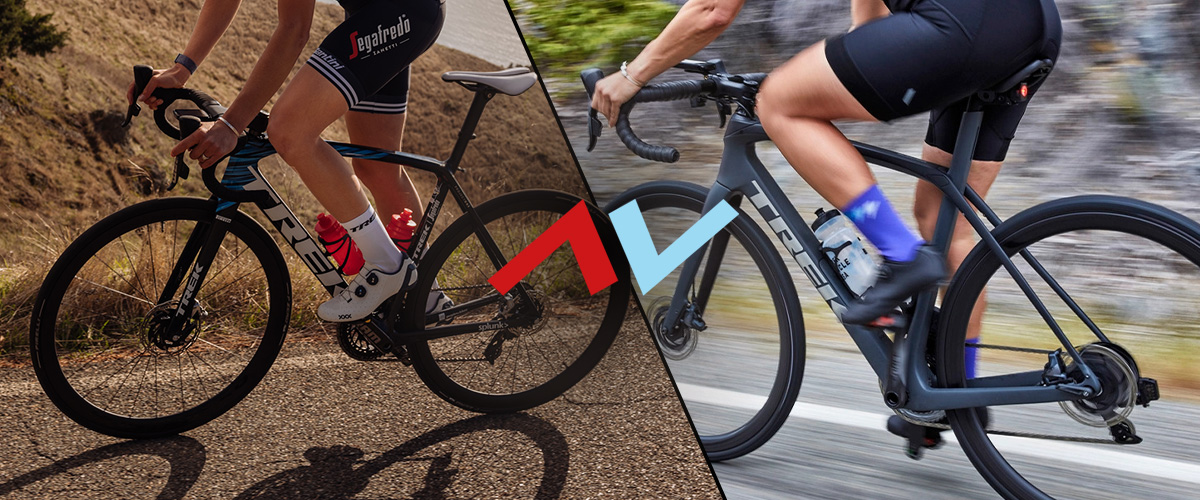
Road Bike Guide: Trek Domane vs Trek Emonda 2023
Battle of the bikes: domane vs emonda.
Trek’s range of road bikes has a well-earned reputation for being some of the best in the business, with each of their respective roadies earning extensive palmares ranging from the cobblestones of Roubaix to the high mountains of Le Tour de France. While most of us might not be World Tour pros, the benefits of each bike still apply to the average Joe – so whether you’re a Strava KOM hunter or a casual club rider, Trek has got you covered.
Let’s take a closer look at the bikes in question.
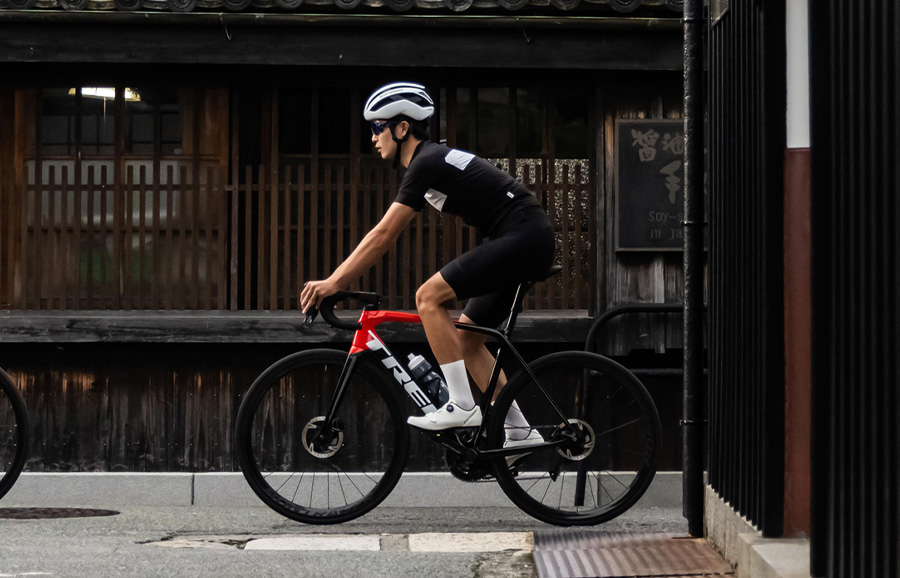
Trek Emonda
This bike fits firmly into the lightweight race bike category, and since its initial launch, it has been at the cutting edge of what’s possible with lightweight bicycle technology. This latest iteration of the Emonda is no different, and it’s faster than ever. Having already been ridden into pink in the 2022 edition of the Giro d’Italia courtesy of Juan Pedro López, it’s evident that this bike is no slouch!
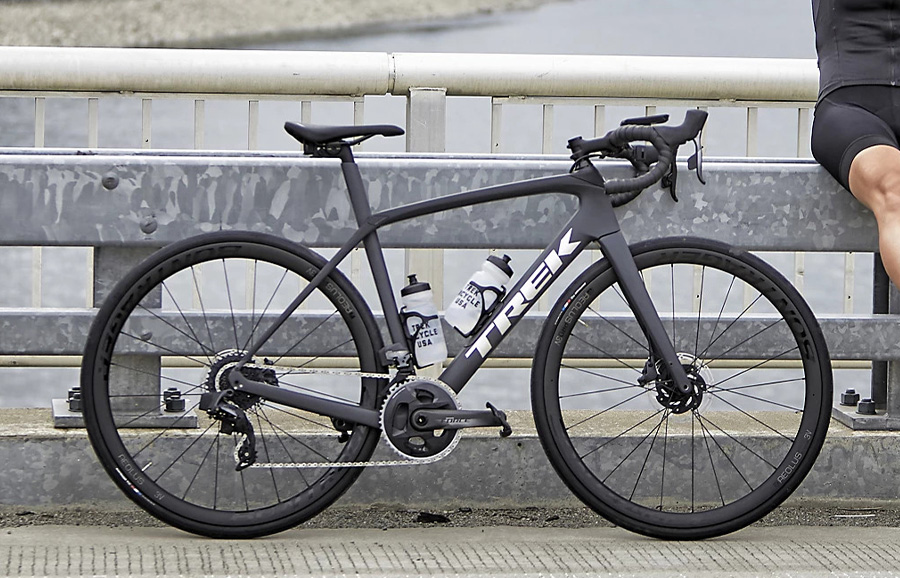
Trek Domane
To simply call the Domane an endurance bike doesn’t do it justice. Developed in conjunction with none other than Fabian Cancellara, the Domane was purpose-built to dominate the cobbles and still does so to this day. With a no-compromise approach, the Domane ensures that comfort doesn’t come at the expense of speed, making this bike one of the most versatile road bike options out there.
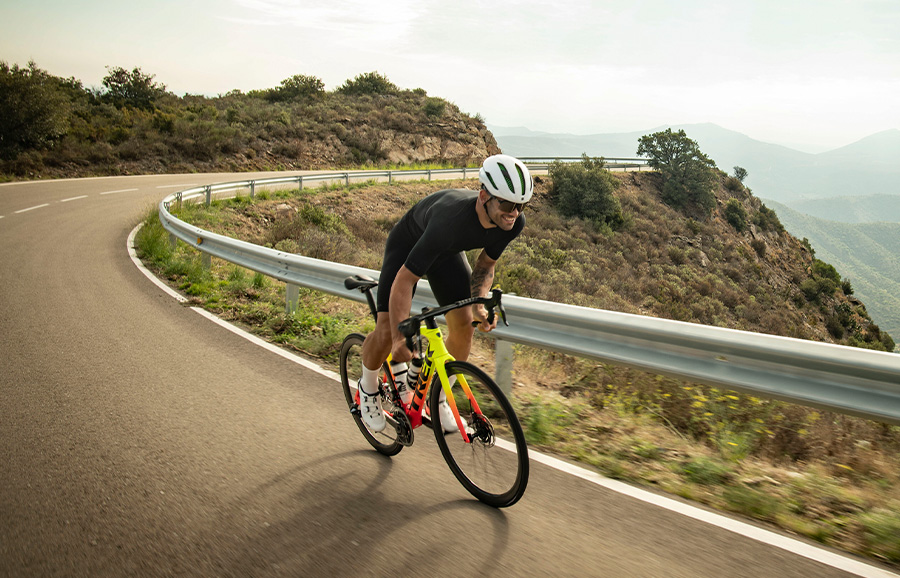
Trek Emonda 5/5
With the Emonda being Trek’s dedicated all-round race bike, speed may as well be its middle name. Since its release, the Emonda has been up there with the lightest production road bikes on the market, and this is still very much the case, but this time it has a trick up its sleeve! This latest iteration is the product of countless hours of testing both on the road and through computer modelling – the lightweight climbing bike has had an aero makeover. Whether it’s stomping up the climbs, descending like a demon or flying along on the flat, the Emonda will do it well and do it fast!
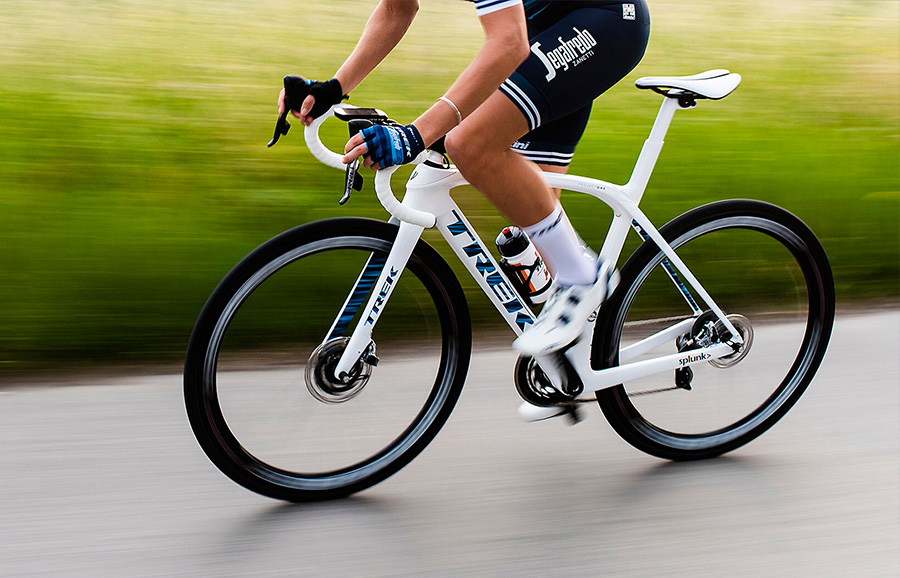
Trek Domane 4/5
The Domane may be an endurance bike, but that certainly doesn’t mean it has to be slow. While it was no slouch to begin with, the latest version of the Domane has also had an aero makeover. Introducing aerofoil tubing and hidden cables while still retaining the same IsoSpeed technology for unrivalled comfort, its race reputation speaks for itself, with this latest edition having been ridden to victory in the inaugural Paris–Roubaix Femmes by Lizzie Deignan in 2021 – if it’s fast enough for her, it’s fast enough for us!
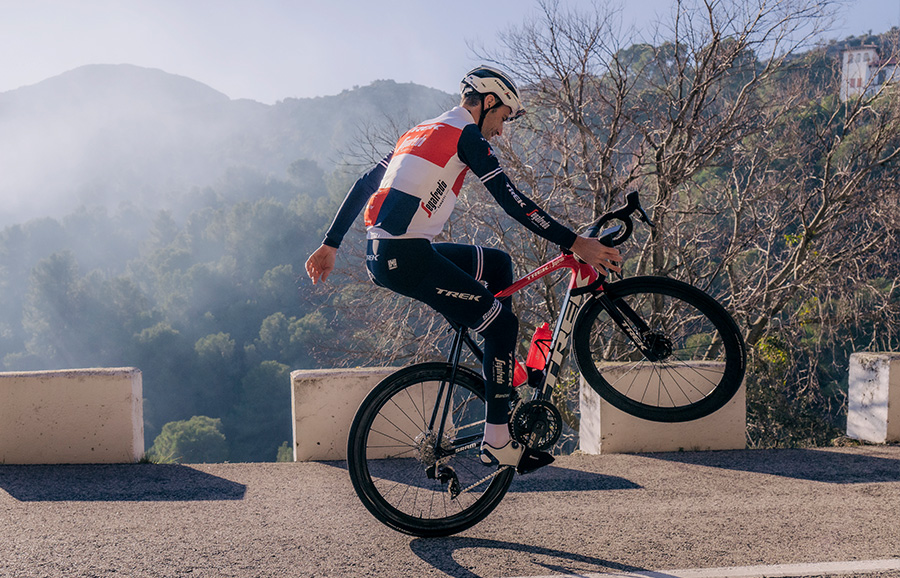
When it comes to the Emonda, low weight goes without saying, and with its new makeover the Emonda bucks the trend that aero has to be heavy. Trek’s latest generation OCLV 800 Series carbon is their lightest yet, meaning that even with deeper section aero tubing, the SLR frame remains below 700g. Pair that with some lightweight wheels and a flash new groupset, and you’ve got yourself a serious featherweight, with the Emonda SLR 7 (equipped with the brand new 12-spd Ultegra Di2 wireless groupset) tipping the scales at just 7.37kg. It’s safe to say that the Emonda comes out on top here!
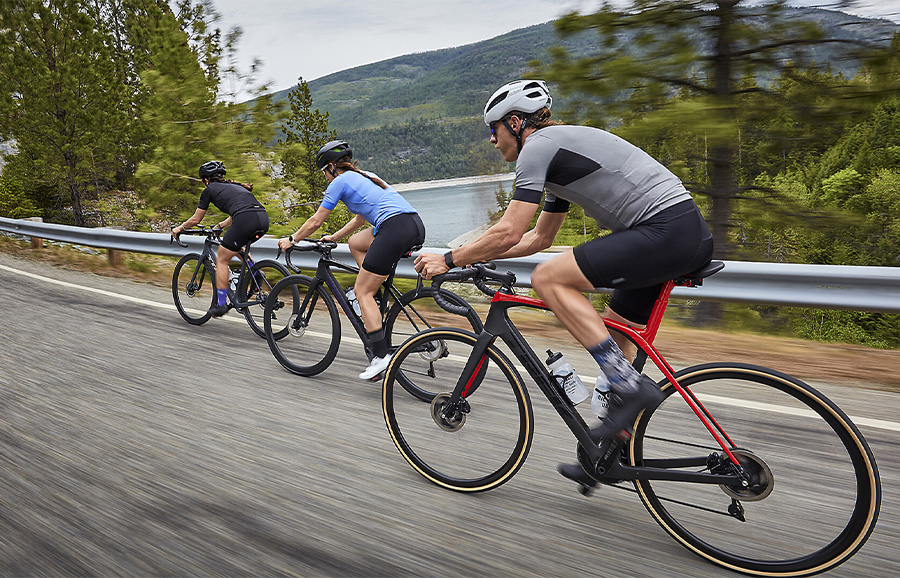
Weight may not be the primary concern with the Domane, and with Trek’s IsoSpeed technology showcased both front and rear, it’s no surprise that it’s carrying a few extra grams compared to the Emonda. With that being said, it’s no lead weight! Utilising Trek’s OCLV 700 Series carbon, the SLR model equipped with 12-spd Ultegra Di2 sits at just shy of 8.40kg – not too shabby considering the armchair-esque ride comfort the Domane provides.
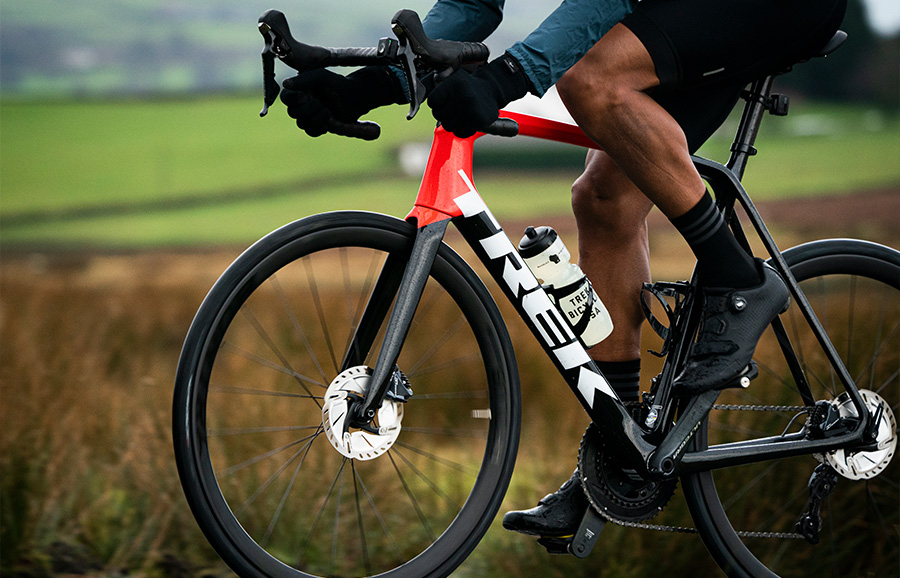
Trek Emonda 4/5
Trek are no strangers to creating cutting-edge carbon, so as well as being their lightest yet, Trek’s OCLV 800 Series carbon has been optimised during the layup process to not only maximise lateral stiffness but also enhance vertical compliance, making for a smooth and responsive ride regardless of the road surface. The days of harsh riding race bikes are over! Of course, geometry also plays an important role in rider comfort, and naturally, the Emonda edges towards the racier end of the scale by putting the rider in an efficient yet sustainable position – comfort hasn’t been compromised, but it’s certainly not a touring bike!
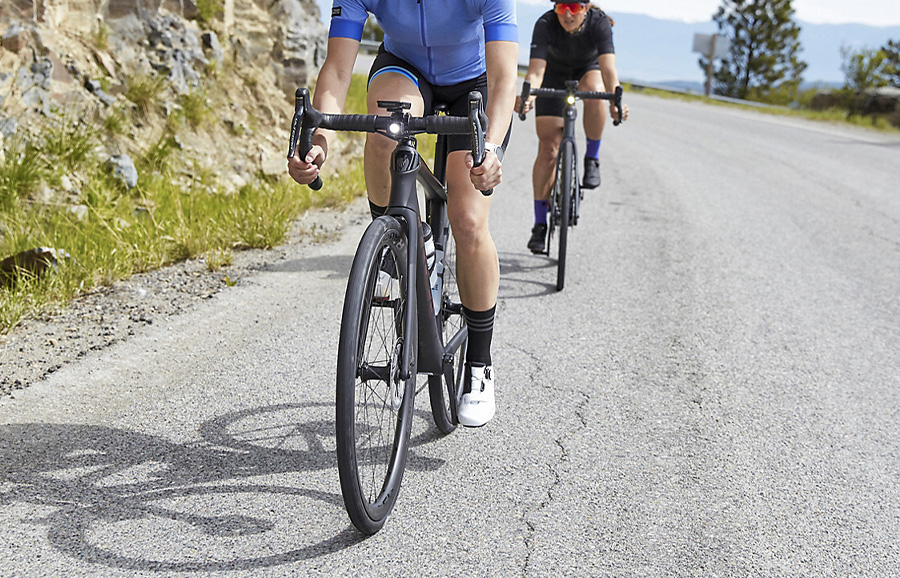
Trek Domane 5/5
Comfort is at the core of the Trek Domane – it’s its speciality! Engineered specifically for racing on the cobbled classics, the ability to soak up road vibrations is critical, which is something that we’re all too familiar with on our home roads. IsoSpeed is what truly sets the Domane apart. Utilised front and rear, the system decouples the tubes at these junctions to allow for increased vertical compliance, almost eliminating the effect of road buzz and bumps without having any effect on the stiffness or handling of the Domane. Coupled with their tried and tested endurance geometry, you’re onto a winner!
Tyre Clearance
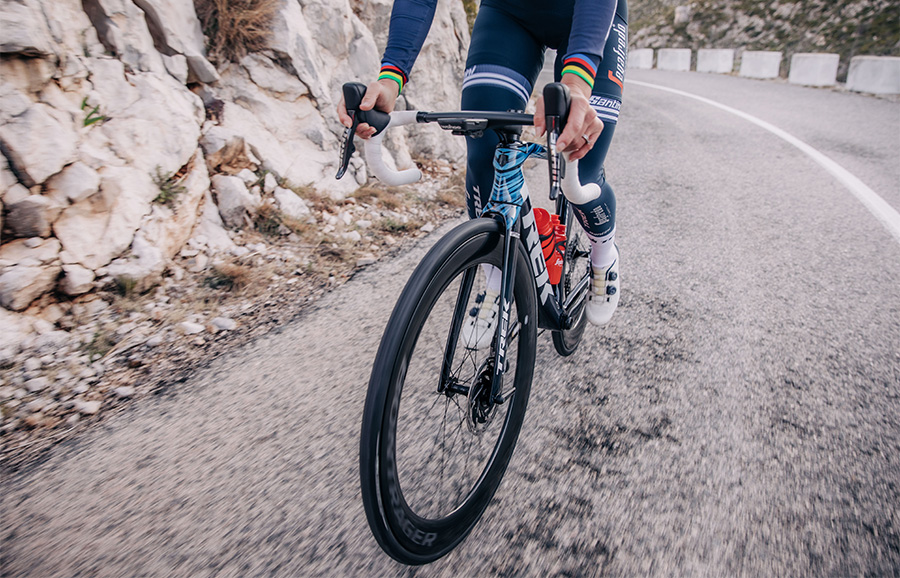
Even the raciest bikes in the world are opting for wider tyres, as not only do they provide significantly improved comfort but they have also been proven to actually offer lower rolling resistance! The Emonda officially accommodates up to 28mm tyres (with room to spare!), and as far as racing is concerned, this is perfect – the ideal blend of comfort and speed. Not only that, but the Emonda’s aero features have been designed around the use of 25-28mm tyres, so there’s no reason to go skinny!
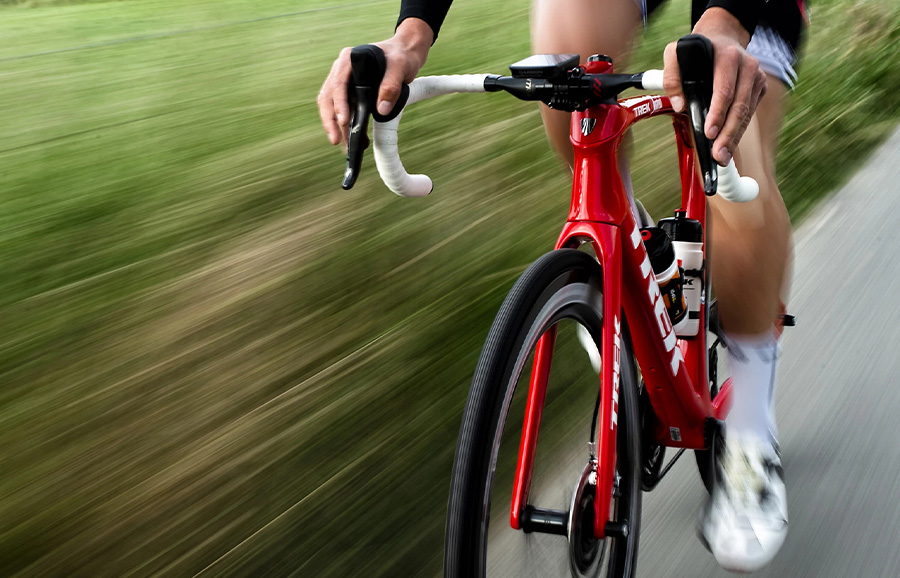
As you might expect, the Domane has no shortage of tyre clearance at its disposal – 38mm to be precise! This dwarfs the clearance that most rost bikes offer, including the Emonda, and while tyres of this width may be marginally slower than something in the range of 23-28mm, here you have the freedom of choice. If you’ve got a race coming up, faster-rolling 28s will fit just fine. If you’re rolling out on a multi-day tour on unfamiliar roads, throw on some chunkier rubber and you’ll be comfy and confident on unruly surfaces – the Domane could even double up as a gravel bike if you’re that way inclined!
The Verdict
Ultimately your choice comes down to what suits your needs. If you’re chasing seconds in a race, trying to claim all of your local segments on Strava, or punishing your friends on the chaingang, the Emonda could be the way to go. For the everyday rider, whether it’s on a club run, sportive or ultra-endurance event, the Domane will serve you well (but will still be handy in the odd town sign sprint!). To discover our range of bikes on offer, visit us in Ashford or Folkestone – we have plenty in stock and ready to go, and we’re always up for bike chat!
Browse the 2023 Trek Domane Range here
Browse the 2023 Trek Emonda Range here
Related Posts

Route of the Week – The IOW

Route of the week – Canterbury to Hythe Road Loop

Route of the week – Canterbury to Reculver tower loop
Write a comment cancel reply.
Save my name, email, and website in this browser for the next time I comment.
Type above and press Enter to search. Press Esc to cancel.

Trek Emonda vs Trek Domane (Detailed 5 Technical Comparison)
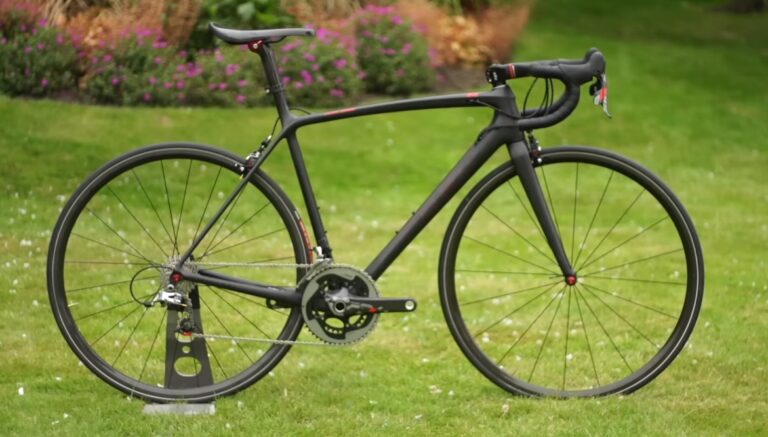
The Trek Emonda bike is made for triathletes, commuters, and athletes alike.
Its new Alpha aluminum frame makes it one of the lightest on the market at just 695 grams (1.25 lbs). The ultra-light E2 steerer on the 1″ threaded carbon fork provides an improved ride quality while shaving grams.
The Trek Domane is an endurance bike aimed at buyers who don’t mind spending a little extra for something that will make them comfortable and help them go faster.
Built on a lightweight aluminum frame with shock-absorbing bumpers on both ends of its seat post, the Domane’s character is decidedly cushy. But show it a hill or some open road, and you might be surprised at how much fun it can be.

Trek Emonda Vs Trek Domane
Both bikes are built to be fast, lightweight, and comfortable. Really, they both seem a little similar in a lot of ways, but when you get into detail, they start to diverge in terms of the different specs that are offered upon each bike.
Both Trek Emonda Bike and Trek Domane Bike are different types of bikes that have their own unique specifications that would appeal to different types of people.
Let’s start by comparing the features and specifications of Trek Emonda Vs Trek Domane
Trek Emonda is made with OCLV 700 carbon while Trek Domane is made up of premium grade steel. Trek bikes designed the Emonda with their H2 fit, which is for riders who are looking to get the most out of their road bike.
This means that you’re going to be in a pretty low position on this bike, which will give you more power when climbing hills or riding at high speeds. It will also put more weight on your arms and shoulders which can tire out pretty easily.
Trek Emonda ALR 5 Road Bike
Trek Domane 4.6 Road Bike
On the other hand, the Domane has a more relaxed H1 fit which puts you a little higher up, which gives you a more upright riding position while still offering some performance benefits.
This means that while the Domane is more for casual riders who are going to be taking their road bike out on weekend rides and short training sessions, it’s still not bad enough where you can’t go out and try to beat your personal best on local hills.

The wheels in Trek Emonda are Bontrager Race Lite i23 tubeless-ready disc carbon wheels, while Trek Domane has Bontrager AT-650 alloy front/back wheels;
Trek Emonda is equipped with Shimano 105 2 x 11 speed gearing system, while Trek Domane has Shimano 105 3 x 11 Speed gearing system.
Trek Emonda costs $1,749 while Trek Domane is more affordable at $899.
Handle Bars
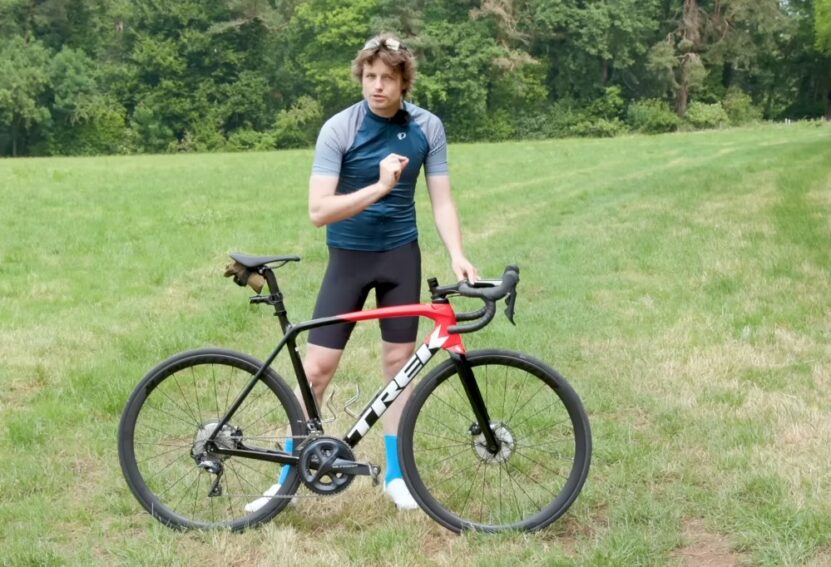
With the Emonda, you’ll get Bontrager’s IsoZone bars to help cut down on vibrations that you’ll feel while riding over rough roads, where the Domane has Bontrager’s Race X Lite stem for a better overall ergonomic fit.
There are some physical features that differentiate these two models of bike. Trek Emonda has integrated disk brakes with Shimano R505 calipers while Trek Domane has mechanical disk brakes with alloy calipers.
The Shimano 5800 shifter and derailleur in Trek Emonda is also another one of its unique physical features that make it different from Trek Domane which has the older version, Shimano 105 shifter and derailleur.
Trek Domane 6 Series Carbon Ultegra
Guru Cycles Emonda SL6 Shimano 105
If you choose to buy either one of these two models, you will not go wrong because both models are manufactured by a reputable company that has been in the bike manufacturing industry for many years.
Trek Emonda and Trek Domane may be different from each other, but they can both satisfy your biking needs and preferences.
You will notice that there isn’t any information here about geometry, gearing, stems, or anything of the sort. In case you don’t know what those things are, here’s a short explanation:
Geometry is the measurement of the angles and proportions of a bike frame.
Gearing is when the pedals on the crankset rotate in direct proportion to the speed at which they revolve around a bicycle sprocket or ring that it also rotates.
Stems are the part of a bike that’s responsible for transferring rider input into directional movements by connecting the handlebars to the frame of the bicycle.
When it comes down to it though, both bikes are designed for road cyclists who are looking to get the most out of their bike when they’re riding.
They both come with high-performance components that will make you faster and give you better handling in almost any condition, giving you an overall more enjoyable ride on the roads.
Similarities Between Trek Emonda and Trek Domane
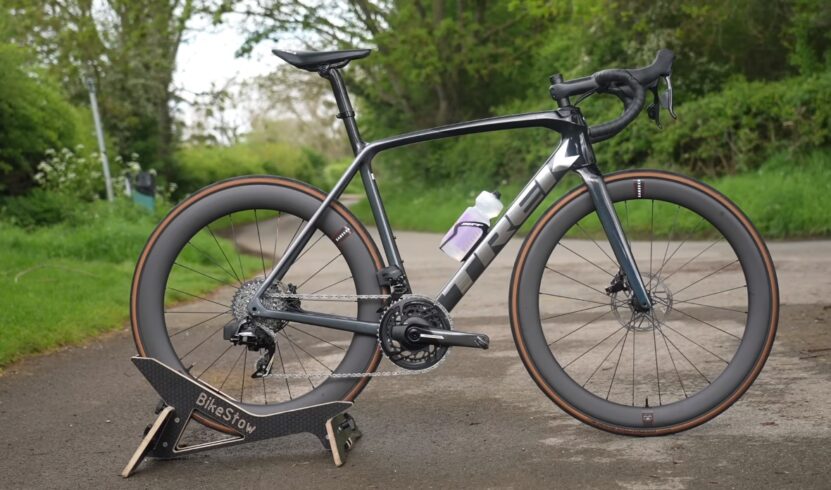
First off, both bikes are made with very similar frames.
Both are made up of Trek’s 500 Series OCLV carbon , which is high-performance and lightweight, but still provides plenty of durability for long rides on rougher roads.
Now, Trek did make some changes to this material between the Emonda and the Domane, so let’s get into those in more detail – it kind of causes a significant difference when you jump up to their higher-end models.
Both bikes are equipped with disc brakes for stopping power in all conditions elements. The front brakes are mounted to the fork, and the rear ones are mounted to the rear dropout.
Both bikes also come with mounts for mudguards for riding in inclement weather.
Both bikes are available in multiple frame sizes. Trek does not list out their specific geometry information, though there are estimates of what these measurements are based on the size of the bike.
So you’ll have to contact your local dealer if you’re in doubt or need help figuring out which size is best for you.
Who Is The Trek Domane Bike For?
Beginners or riders who are just entering the sport and don’t want to spend a lot of money
Riders who don’t like riding in the drops because the risers put their hands at an awkward height
Rider who need extra clearance between themselves and the top tube to be more comfortable on longer rides
Riders who tend to ride on rougher roads
Riders who need extra controls for controlling speed and making turns
Trek Emonda Ultegra Road Bike
Trek Domane 6 Series Turino Bike
Who Is The Trek Emonda Bike For?
· Riders looking to upgrade from a lower level road bike and make a significant jump in performance, while still not breaking the bank on that big of an investment.
While you may be able to get a few good years out of your entry-level road bike , there’s definitely a limit on what you can do with them.
With the Trek Emonda, you get a high-performance road bike that will allow you to take on longer and more challenging rides, and really enjoy your time out on the road.
Which Bike Is Best For Me?
The truth is that it’s going to come down to how much you value comfort and speed. The Emonda is definitely a higher-performance bike than the Domane, giving you more power for climbing hills and better overall maneuverability on the road.
If you’re looking for something that will help you beat your personal best at those difficult training sessions, this is probably the better option.
However, the Domane is a much more relaxed ride, which will be appreciated after long days of riding. If you’re going to be doing most of your riding on the weekends or just for short training rides to get into shape before that big race, then this might be the better choice for you.
Look at it this way; if you’re looking for something that’s going to be higher-performance and give you an overall better ride when you’re riding, the Emonda is probably the better option.
However, if you want something that can still go out on short weekend rides to get into shape and still give you a decent workout, the Domane might be the better choice for you.
In terms of which one has a better overall design, that’s going to depend on what your preferences are as well.
Again, both bikes come with high-performance parts that will give you great rides in most conditions, but the geometry of the Emonda will be better for performance while the Domane offers a more comfortable ride.
Depending on your particular riding style and preferences, one bike might work better than another. If you’re looking to buy a bike that will get you the best overall performance, then your choice is going to be between the Emonda and the Domane.
The Emonda comes with better geometry for a more precise ride while the Domane has been designed for a more comfortable experience. If you’re looking to buy a bike that’s going to be primarily used on shorter rides or you’re a casual rider, then it might be better to go with the Domane.
If you’re looking for something that comes with the best possible technology for a more comfortable ride, then you might want to go with the Domane.
However, if you’re looking for something that will give you better overall performance on your rides both in terms of comfort and maneuverability, then it’s probably going to be worth spending a bit extra on the Emonda.
Related Posts:
- Specialized Tarmac vs Trek Emonda Detailed Comparison
- Top Fuel vs Fuel Ex (Detailed Comparison)
- Huffy Vs Kent Bikes (Detailed Comparison)
- Hardtail vs Full Suspension (Detailed Comparison)
- Trek Madone Vs Domane Road Bikes (8 Key Differences!)
- Trek Domane Sl5 vs Sl6 (9 Comprehensive Differences)
Cycling school
Emonda, Madone, Domane: Your Perfect Road Bike?

Have you chosen Trek as your potential brand for the next road bike adventure, yet you’re uncertain about the specific model? This informative piece is here to assist you. Trek offers three distinct categories of road bikes: the Emonda, the Madone, and the Domane. The key distinctions among these bicycles lie in their geometry, tube designs, and weight. The significance of these factors is substantial as they profoundly influence how a bike handles and performs. If you’re eager to determine the ideal choice for your needs, continue perusing this article!
Deciding Between Trek Road Bikes: An In-Depth Comparison
In a nutshell:
- The Emonda: A feather-light racing bike tailored for those who crave speed and an aggressive riding style. Its lightweight nature makes it a prime choice for uphill climbs, requiring less effort to conquer hills;
- The Madone: Slightly heavier than the Emonda, the Madone boasts an aerodynamic design that excels on flat terrains. Incorporating IsoFlow technology beneath the seatpost, it efficiently absorbs shocks and enhances airflow, delivering a comfortable and aerodynamic experience surpassing the Emonda;
- The Domane: Differing from the Emonda and Madone, the Domane showcases a more upright geometry, rendering it an excellent touring companion for covering extended distances. With its ability to accommodate wider tires and equipped with the IsoSpeed Decoupler on the seat post, it absorbs road vibrations through slight deflection. This quality proves invaluable for off-road ventures or traversing uneven landscapes.
Moreover, the Domane stands out as the sole road bike within Trek’s lineup available at a sub $2000 price point, an ideal starting point for newcomers. However, it’s important to note that the alloy Domane AL lacks the same IsoSpeed technology.
If that overview felt a bit hasty, fear not. Let’s delve deeper into the specifics of each Trek road bike model.
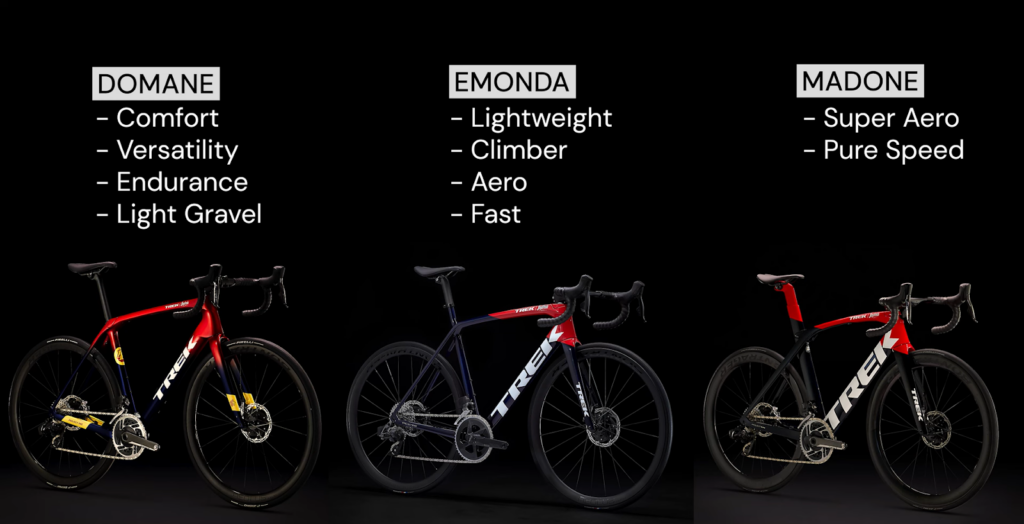
Emonda: The Feather-Light, Semi-Aero Racing Dynamo
Meet Trek’s embodiment of speed and lightness – the Emonda. Crafted for the avid speed enthusiast, this bike is a champion of rapidity. The 2021 and subsequent models flaunt a semi-aero construction, meticulously shaping the bike’s tubing to slice through the air with reduced drag. This results in heightened speed on both level surfaces and uphill stretches, given you possess the prowess to maintain pace.
Climbing, a realm where effort meets elevation, becomes a triumphant feat with the Emonda’s feather-like demeanor. Its lithe structure diminishes the exertion required to conquer ascents.
Reasons to Embrace the Emonda:
- If velocity and an assertive riding style are your passion, the Emonda beckons as your ideal companion;
- Effortless hill conquests await thanks to its weightlessness. For those residing in hilly domains with extended ascents, the Emonda stands as an impeccable ally;
- Nimble and responsive, this bike’s agile handling imbues a sense of velocity that’s palpable.
Factors to Ponder Before Opting for the Emonda:
- Should comfort reign supreme in your biking aspirations, the Emonda might not claim the throne. The bike’s lightweight carbon composition, while aiding speed, transmits road irregularities profoundly. Yet, for seasoned riders, this raw feedback could be a boon. Experimenting with 28mm tires or a tubeless setup can augment comfort;
- The semi-aero architecture, while enhancing lightness, might not match the velocity of dedicated aero bikes, notably the Madone, on flat roads. If your abode is a particularly flat terrain or ascents are your adversary, the Madone might emerge as the favored choice, regardless of the incremental weight;
- For ventures into rugged terrains, the Emonda doesn’t boast the pedigree. If unpaved paths and challenging landscapes are your destinations, set your sights on the Domane or Trek’s gravel offering, the Checkpoint.
In the realm of swift pursuits, the Emonda stands as a beacon. It beckons those who revel in the symphony of velocity and the challenge of uphill mastery.
Madone: The Swift and Aerodynamic Racing Dynamo
At the heart of Trek’s road bike offerings lies the renowned Madone – a model celebrated for its aerodynamic finesse. Engineered to conquer flat expanses with unrivaled speed, the Madone’s design is an embodiment of aerodynamic prowess. Embedded within its structure is the IsoFlow technology, seamlessly absorbing road vibrations while optimizing airflow to minimize drag.
The Madone’s geometry mirrors that of the Emonda, presenting a kinship in form. Although slightly heftier, this weight differential fades into insignificance when cruising on level terrain. For those in pursuit of velocity within flat landscapes, the Madone emerges as a compelling choice.
Reasons to Embrace the Madone:
- Your journey unfolds across flat or gently undulating terrains, and you seek a swifter, yet comfortable ride;
- The allure of aerodynamic supremacy beckons, particularly on straight, level pathways;
- Your quest entails harnessing a rigidity that excels in sprinting.
Factors to Consider Before Adopting the Madone:
- If your routes are marked by extended climbs, the Madone might relinquish a touch of the joy experienced with the Emonda. Descending aboard a Madone is a thrill due to its aerodynamic merits and wind-cutting stability, yet uphill pursuits might not match the Emonda’s exhilaration. (Though, certainly not implausible.);
- For a well-rounded companion capable of both nimble ascents and impressive flat speed, the Emonda, with its semi-aero configuration, fits the bill precisely;
- In your quest for a ride adept at handling rugged landscapes, the Madone might not be the prime choice, even with the IsoSpeed feature. If versatile performance is your aim, the Domane is designed to meet your needs.
In the universe of velocity and streamlined grace, the Madone stands tall. It beckons those enticed by the siren call of flat speed and aerodynamic dominance.
Domane: Endurance Steed for Distance & Terrain
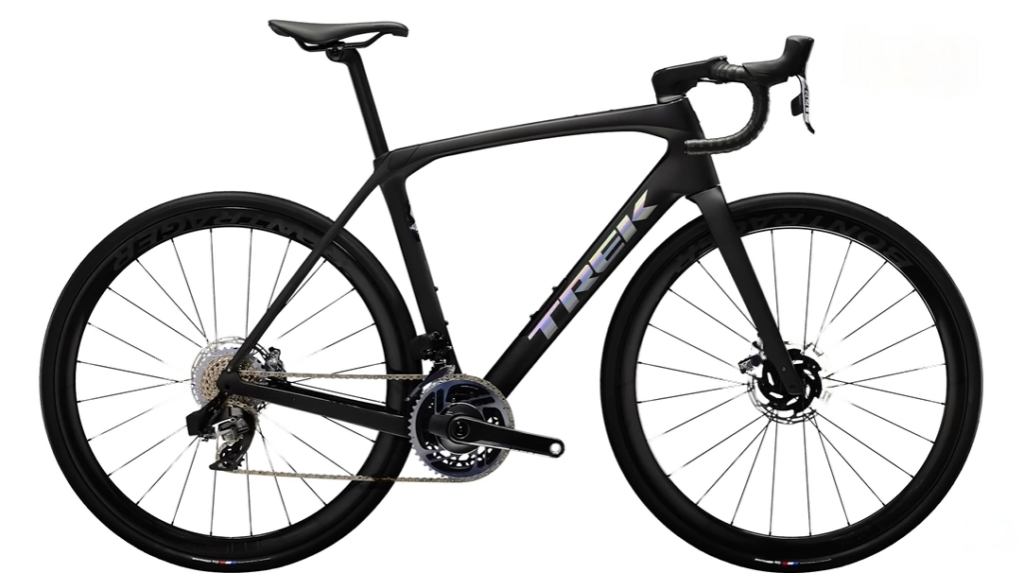
The Domane’s geometry sets it apart with its more upright stance in comparison to the Emonda and Madone, rendering it an optimal choice for those seeking prolonged rides. In contrast to the Emonda and Madone, the Domane’s geometry prioritizes stability, forming the backbone of its design philosophy.
Fortified by the IsoSpeed Decoupler and boasting generous tire clearances, the Domane transcends its role as a mere endurance bike – it’s equally adept as a gravel road explorer, and even a trail-taming companion if you dare.
Reasons to Embark on the Domane Journey:
- Your ventures encompass substantial distances. While it’s worth noting that the Emonda and Madone can indeed accommodate long rides, the Domane elevates comfort to an entirely new echelon;
- The allure of a comfortable ride capable of conquering rough terrains, including gravel roads and trails, beckons;
- Seeking an upright geometry that minimizes strain on your back during prolonged hours in the saddle;
- Integrated storage is on your checklist, catering to the needs of carrying mini-tools, spare tubes, and snacks during those extensive rides.
Factors to Reflect Upon Before Choosing the Domane:
- If speed reigns supreme, the Domane might not parallel the Emonda and Madone in this domain. However, consider the trade-off, as the advantages become notably conspicuous during lengthy excursions;
- If lightweight construction is a paramount concern, the Domane’s relatively heavier build, surpassing even the Madone, could pose a consideration;
- For agility enthusiasts, it’s important to recognize that while the Domane’s geometry infuses stability, agility takes a backseat. Suited for endurance endeavors, the Domane shines in extended journeys rather than the rapid pace of racing circuits.
In the realm of extended odysseys and rugged landscapes, the Domane reigns supreme. Its design harmonizes endurance, comfort, and versatility, making it the trusted companion for those who seek the open road and uncharted trails.
What Type of Cyclist Are You?
If you’re taking your initial pedal strokes in the expansive world of cycling, the Emonda beckons as a promising choice. Its versatile nature and well-rounded performance package make it an excellent entry point. The Emonda’s feather-light frame and responsive handling possess a magnetic allure that can easily captivate newcomers. In contrast, the Madone, with its emphasis on speed and aerodynamics, might not resonate as strongly with beginners who may not encounter substantial air resistance at their developing speeds.
For the seasoned riders who’ve felt the exhilaration of conquering steep climbs and dream of earning a place among Strava’s elite or clinching a coveted “KOM” title, the Madone stands tall as the answer. If criterium racing is your forte, the Madone’s aerodynamic edge might just tip the scales in your favor.
When the age-old dilemma between comfort and stiffness arises, often inherent in the choice between lightweight and aerodynamic bikes, the Madone defies convention. It bestows a pleasantly unexpected comfort, thanks to its IsoFlow technology, rivaling or even surpassing the comfort offered by the Emonda.
However, if your aspirations lead you to embrace a versatile companion for all terrains, or if the more aggressive riding postures of the Emonda and Madone strain your back, the Domane awaits with its accommodating geometry and endurance-oriented design. It thrives as the road bike of choice for those who seek comfort, stability, and a seamless transition from smooth roads to uncharted trails.
In the realm of Trek road bikes, the choice between Emonda, Madone, and Domane encapsulates the diverse desires of road cyclists. The Emonda’s lithe build beckons speed enthusiasts, infusing ascents with an air of conquest. The Madone, boasting aerodynamic excellence, invites those enamored with flat speed while surprising riders with its comfort. On the other hand, the Domane’s endurance-focused design and versatility cater to adventurers who seek comfort on extended journeys, even when the path veers off-road. Whether you chase the thrill of uphill battles, the rush of aerodynamic dominance, or the comfort of enduring vast distances, Trek offers a model that aligns with your road cycling aspirations.
Ruelas Larry
Gear-obsessed editors choose every product we review. We may earn commission if you buy from a link. How we test gear.

Trek’s Latest Émonda ALR Is as Good as Aluminum Road Bikes Get
Dialed geometry, smooth welds, and an excellent ride feel add up to make the latest aluminum Émonda ALR a great alternative to pricier carbon bikes.
The Takeaway: The updated Trek Émonda ALR is thoroughly modern, yet simple and fully upgradable. Just the way an aluminum road bike should be.
Trek Émonda ALR 5
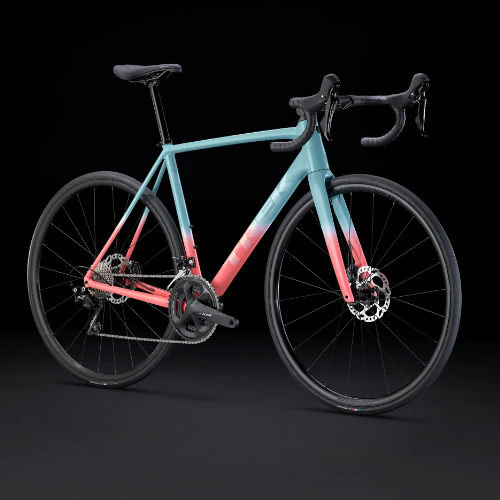
The Émonda ALR borrows its geometry (down to the millimeter) from its much pricier (and lighter weight) carbon fiber version of the Émonda. This means riders get the same, proven, race-winning geometry of the much pricier carbon model for around one thousand dollars less.
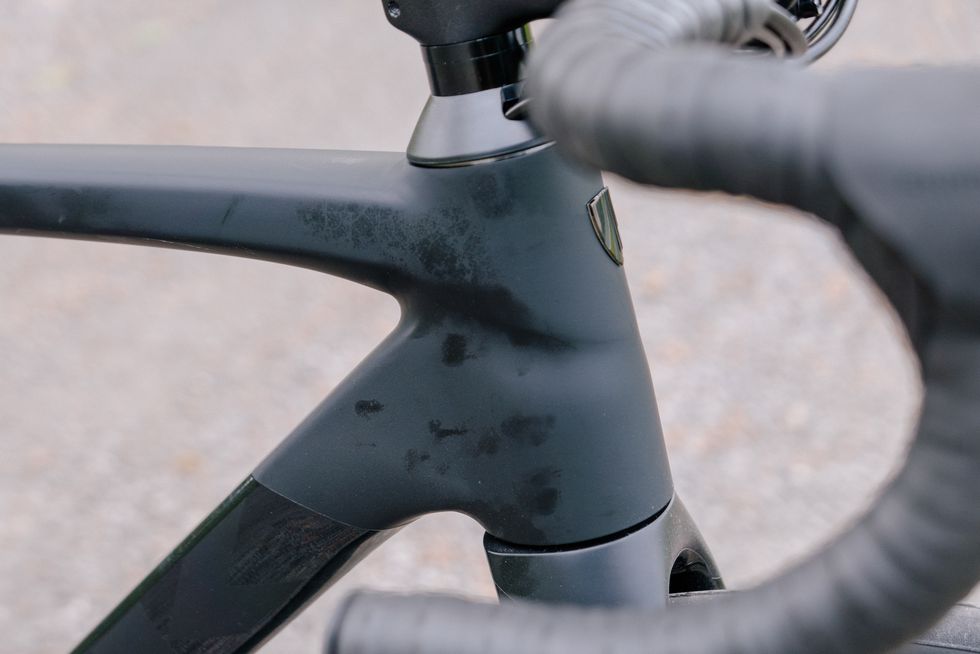
While the cost savings might be the most enticing feature of the ALR for many riders, the updated aluminum frame is the showstopper here. Much like its carbon version, the Émonda ALR features a mix of aerofoil (Kammtail) shaped tubes along with more traditional round profiles. Trek uses its 300 Series Alpha aluminum for the frame, which weighs in at 1,257 grams (claimed), for a painted size 56cm. It’s combined with a full carbon fork that adds 406g to the total package. This is impressive—weighing a mere 34g more than Trek’s carbon Émonda SL variant of the frame (which sells for $1,000 more than the ALR).
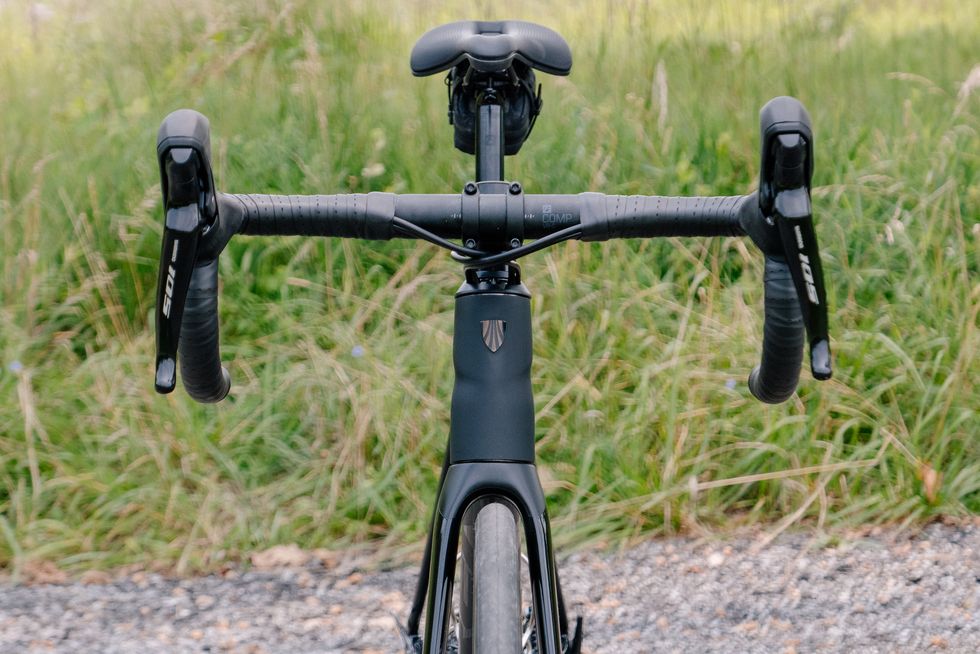
The Émonda ALR frame is also refreshingly free from proprietary standards. The bike uses a T47 threaded bottom bracket, a round 27.2mm diameter seatpost, and a completely normal handlebar and stem combination using a 31.8 bar clamp and 1-⅛ steer tube. All of these things make the Émonda ALR an easy-to-live-with bike that can be upgraded and customized as riders see fit.
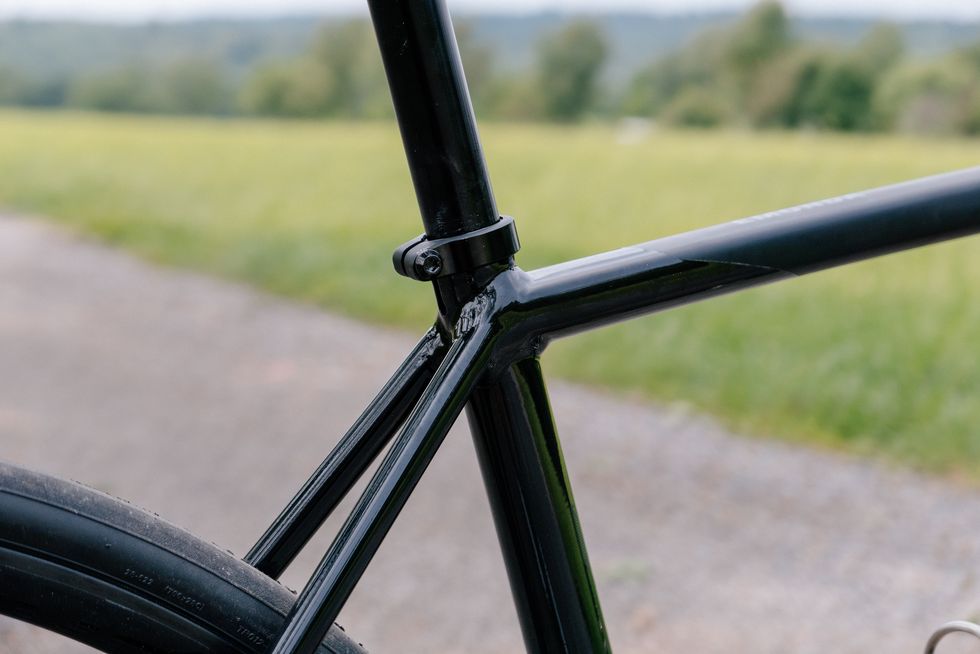
Alloy-frame aficionados have divided opinions about the appearance of welds. Some prefer to see the handy work of the welder and how tidy they can make the welds, while others prefer not to see the welds at all. Fans of chunky welds will be disappointed as Trek employed its Invisible Weld Technology on the Émonda ALR. This technique creates an incredibly seamless look to the frame. At arm's length (and particularly with the black frame), riders can easily mistake the Émonda ALR for a pricier carbon bike.
Another big change is at the Émonda’s front end. Trek implemented an integrated cable routing setup that’s very similar to the style used on the Allez Sprint. This setup sees the cable housing and brake hoses run externally along the bar and stem and then enter the frame through the top headset bearing. This kind of integration has the advantage of allowing riders to easily swap stem lengths or handlebars while still achieving a rather clean-looking cockpit. While Trek avoids the major headaches of cockpit customization with this cable routing solution, like many other recent road and gravel bikes, it suffers the added complexity and expense of routine service (such as replacing cables and housing or servicing headset bearings).
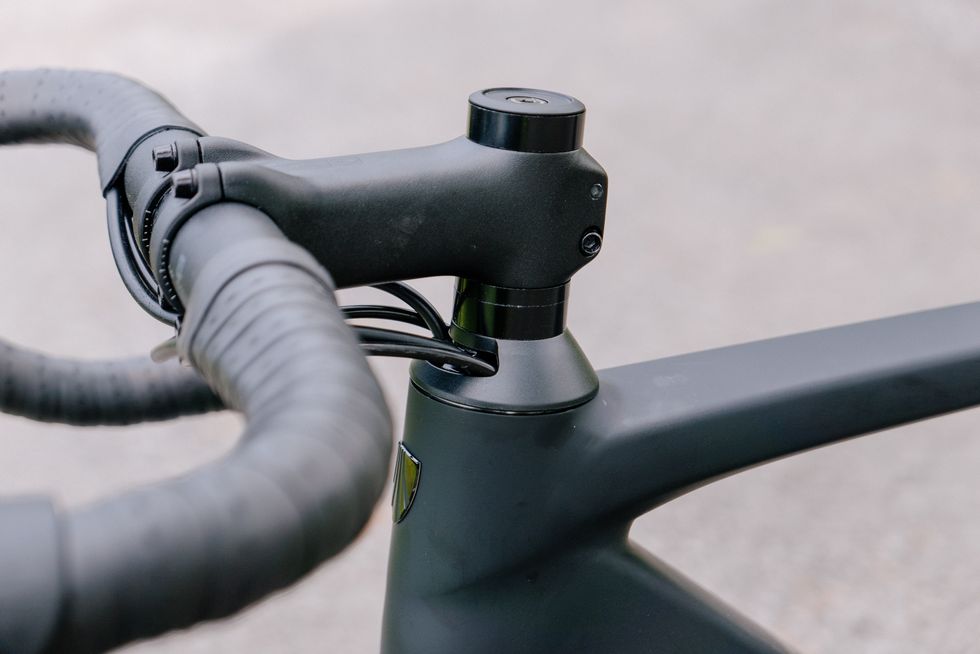
Unlike high-end bikes with electronic shifting—since the Émonda ALR is only sold with mechanical shifting—there are double the cables routing through the headset. Bikes with similar routing often face more rapid deterioration in shift performance (compared to bikes where things are routed externally) due to the tight bends the derailleur housing must make to fit into the space. It makes replacing cables and housing a major headache and costly if you’re not doing it yourself.
According to Cadence Cycling Center in Philadelphia, Pennsylvania, replacing a single-shift cable on a bike with through the headset routing can cost as much as $200 in labor. This is because shops tend to charge for this work by the hour and the time it takes to complete this service varies based on how complicated fishing the housing and cable is through the frame. To perform the same repair on a bike with externally routed cables, I was quoted a flat $25 labor charge.
Fit and Geometry
The Émonda ALR features the same H1.5 geometry that Trek uses on its Émonda and Madone carbon models. This geometry splits the difference between the aggressive H1 fit and the more relaxed H2 version. Meaning that a majority of riders should be able to find a good riding position regardless of whether they want to be long and low or more upright.
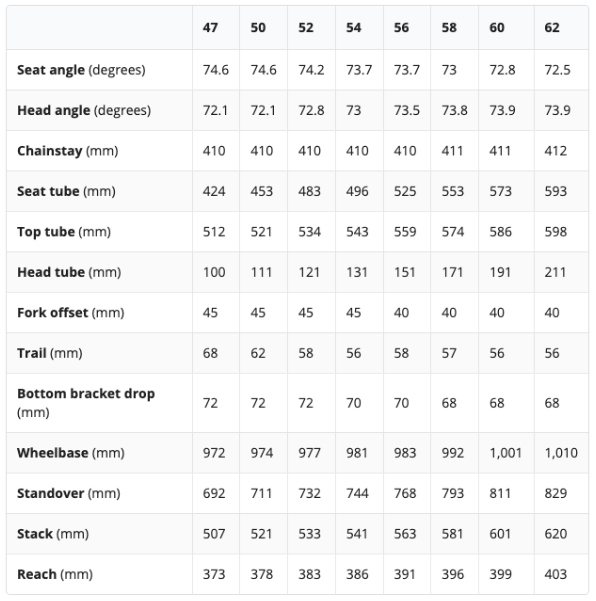
Additionally, Trek offers the Émonda ALR in a whopping eight sizes. The smallest size 47cm frame should be good for riders as short as 5’0”, and the largest size 62cm fits riders up to 6’5”, according to Trek.
The ALR Build
Trek currently offers only one complete bike Émonda ALR build. It features Shimano’s excellent 105 11-speed mechanical groupset, along with a Bontrager alloy bar, stem, and seatpost. Rounding things out is a pair of Bontrager alloy Paradigm SL wheels, which are very traditional with round J-bend spokes laced 2x but feature a 21mm internal width and are tubeless-ready. However, riders need to purchase the necessary items to turn them into tubeless wheels (including tubeless-specific tires, valves, and sealant).
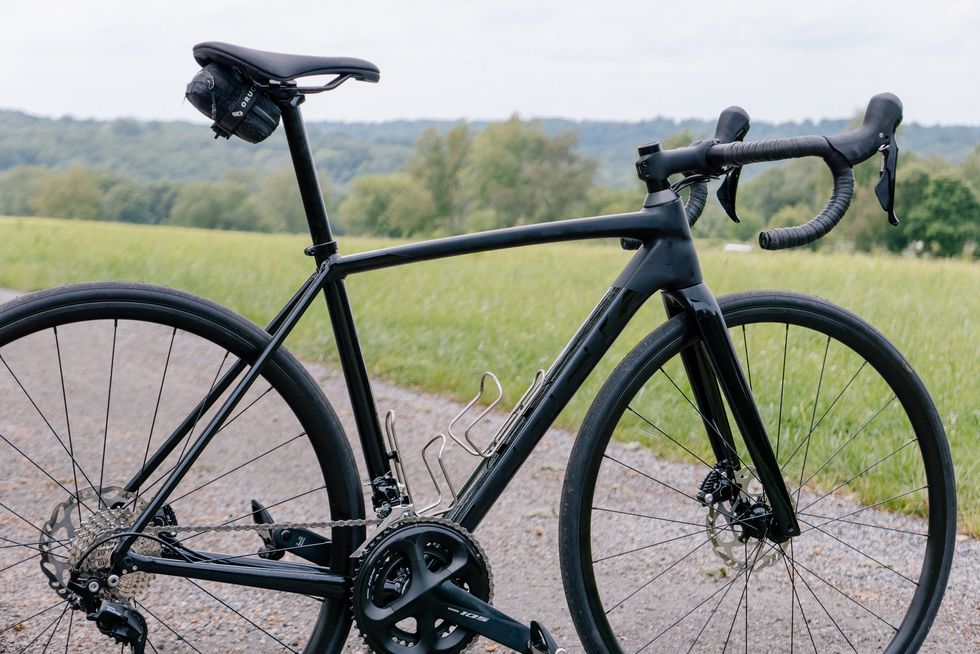
Trek prices the Émonda ALR at $2,300 for the complete bike and $1,200 for the frameset.
Trek confirmed that the Émonda ALR will receive an update to 12-speed 105 in the near future. Unfortunately, Trek representatives have not told us how much it will cost or the complete specification list. (But for reference, a 12-speed 105-equipped Domane AL 5 sells for $2,000)
Ride Impressions
Aluminum road bikes often have a reputation for being overly stiff, harsh, and cheap (in a bad way). However, these traits are generally not found on modern and well-engineered aluminum frames. (And it’s such a pervasive stereotype that my colleague Matt Phillips wrote a whole column about it .)
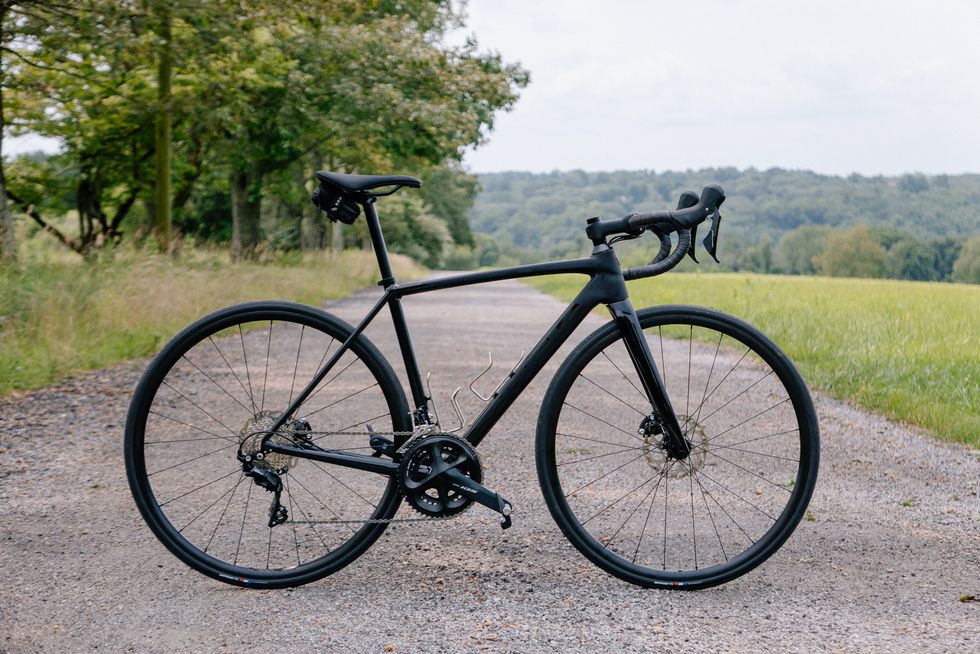
While some bikes lean into aspects of that reputation (the Allez Sprint is an unapologetically stiff-as-hell criterium racing machine), the Émonda ALR takes a slightly different approach. Since it’s modeled after the carbon Émonda (a bike largely intended to win mountain stages in Grand Tour races), the ALR is designed with all-day comfort in mind. This makes the overall ride more relaxed and comfortable compared to the Allez Sprint and should be a plus for many riders.
Even if some might consider 11-speed 105 outdated (due to the recent launch of the 12-speed 105 R7100 components ), Shimano’s 105 R7000-series drivetrain is an excellent and well-proven groupset. The 11-speed group has precise and crisp shifting front and rear and also impresses with powerful braking at the wheels and excellent control of the levers.
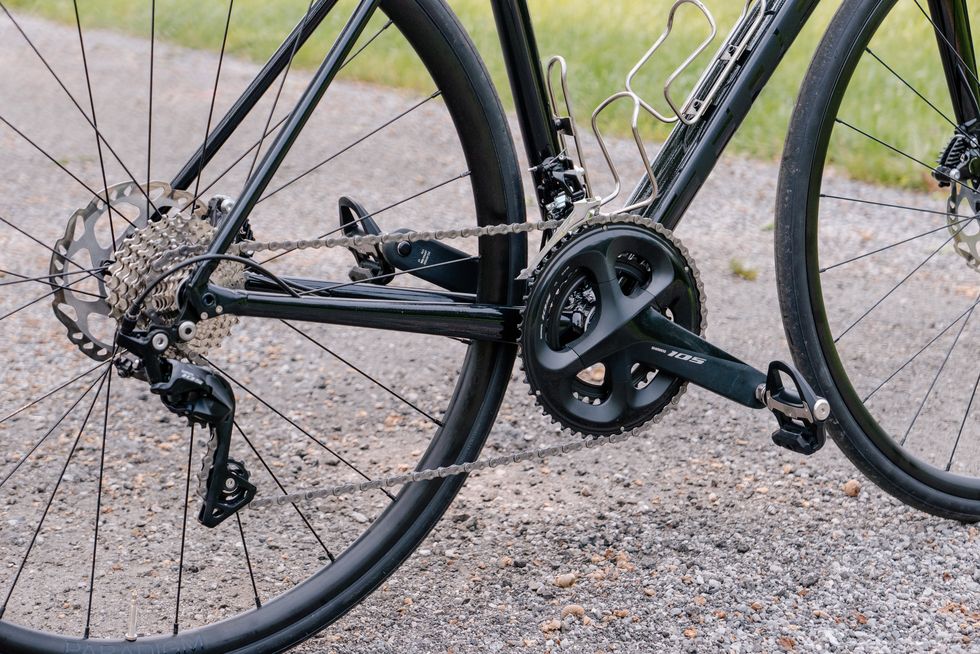
In contrast, the most disappointing part of the Émonda ALR’s build kit is its tires. Which would be the absolute first thing I upgrade. The Bontrager R1 wire-bead road tires weigh 360g per tire and are very much included to help meet the Émonda’s price point. They make the bike feel sluggish in a straight line while also not helping to foster any cornering confidence. A swap to even a mid-range tire from any of the major tire brands will probably drop around 30-40g of rotating weight per wheel and dramatically improve the ride quality of the bike.
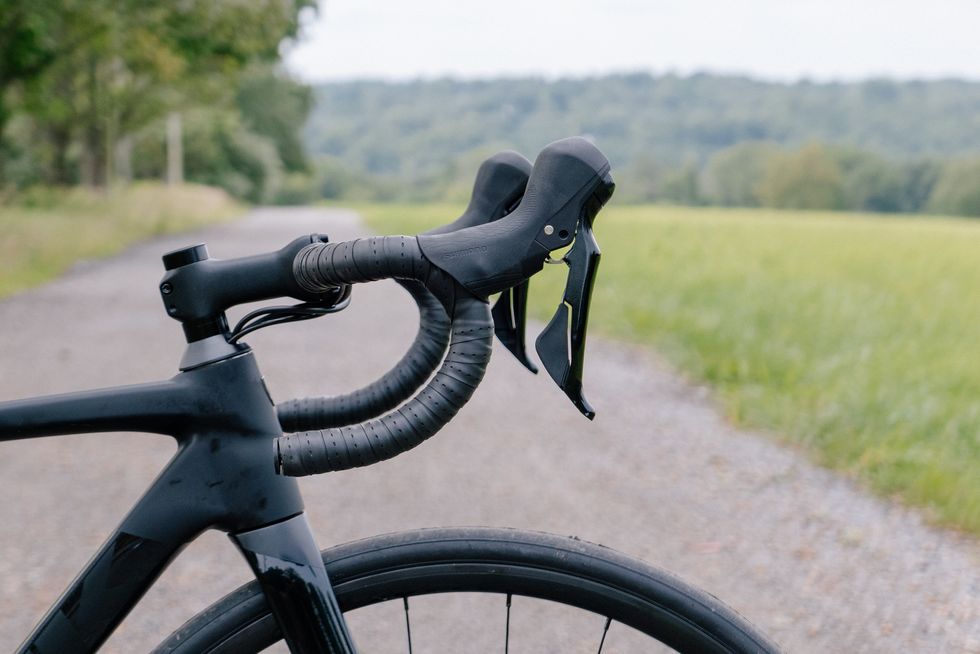
I found the rest of the ALR’s Bontrager finishing kit perfectly serviceable. The seatpost, stem, and saddle were nothing flashy but did the job. The handlebar has a rather classic feeling bend, drop, and reach. Best of all, if any of these stock items don’t work for you, it’s simple to swap any of them out for a preferred version.
Out of the box, I found the Émonda’s ride quality quite good but perhaps a bit on the firm side. Lowering the tire pressure to around 68-72 psi range greatly improved the comfort. And once I swapped to a set of Continental GP5000 tires, the Émonda ALR really began to shine on the road.
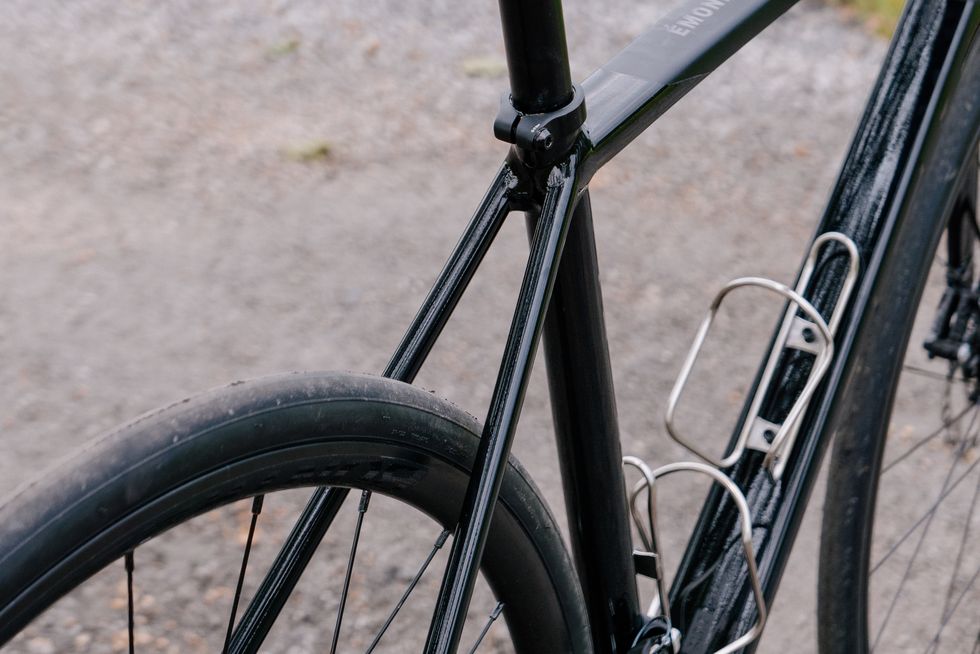
There’s nothing gimmicky about the Émonda ALR. It’s a classic road bike in the simplest sense of the term. Riding it for the first time felt familiar and reassuring. The geometry didn’t require me to adjust to the bike—I could just get on and go. Even on that first ride, I felt like I could dive into corners with the assurance of knowing what the Émonda ALR would do when I leaned in. The geometry was a perfect mix of stability and responsiveness with a dash of that springiness that good metal bikes have.
On flat and rolling terrain, the Émonda ALR is right up there with almost any non-aero road bike of the last few years. Its dialed geometry makes it a pleasure to descend on, and the frame has the right snap to be a truly wonderful climber.
What holds the ALR back on the uphills, though, are the stock wheels. At 1,800 grams, they’re not as heavy as some wheels on bikes in this price range, but they just feel soft and unresponsive. After upgrading the tires, a new set of wheels would be my next purchase for the Émonda ALR.
One aspect of the Émonda ALR that feels a bit dated for a road bike made in 2023: Trek caps the bike’s maximum tire clearance at 28mm. In practice, there is enough room to comfortably run 30 or even 32mm tires (depending on the tire and rim combination). Still, I would feel better with a bit more official wiggle room, especially as it’s gotten harder to predict the measured width of various tire and rim combinations.
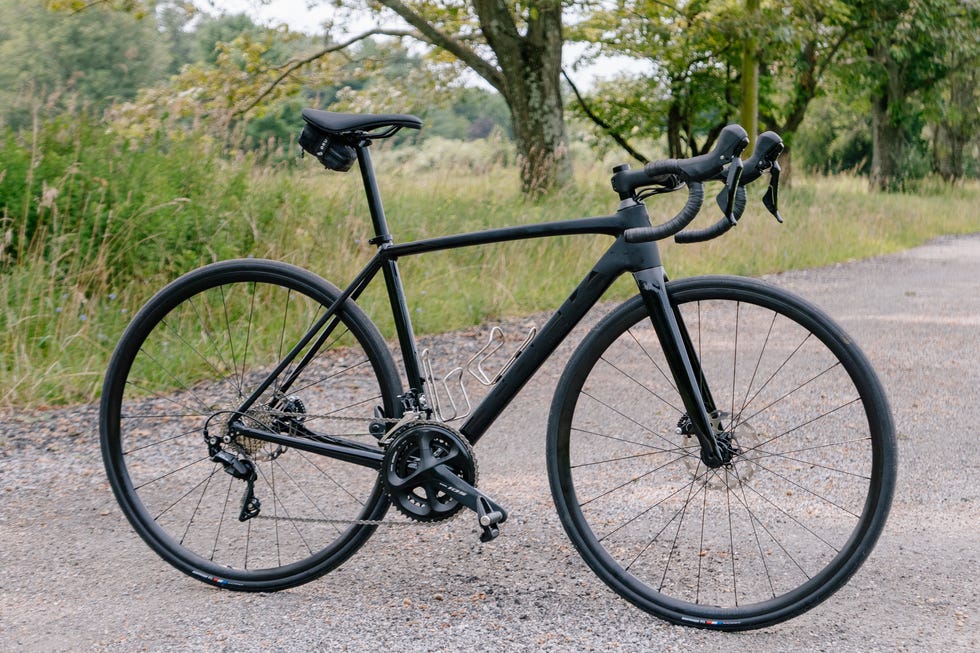
Overall, the Émonda ALR gets way more things right than it does wrong. While it's easy to nitpick things like its tires and wheels, Trek uses these parts to get the Émonda ALR to its modest price. And the ALR is up there with some of the best aluminum race bikes. It’s an impeccably finished and thoroughly well-designed aluminum bike that’s only a few grams heavier than its mid-tier carbon version. Plus, the Émonda ALR shares geometry with its pricier siblings and uses no proprietary standards or parts. With the ALR, Trek made a bike that nails all the things that have always made me love aluminum race bikes.
Test Editor Dan Chabanov got his start in cycling as a New York City bike messenger but quickly found his way into road and cyclocross racing, competing in professional cyclocross races from 2009 to 2019 and winning a Master’s National Championship title in 2018. Prior to joining Bicycling in 2021, Dan worked as part of the race organization for the Red Hook Crit, as a coach with EnduranceWERX, as well as a freelance writer and photographer.

.css-1t6om3g:before{width:1.75rem;height:1.75rem;margin:0 0.625rem -0.125rem 0;content:'';display:inline-block;-webkit-background-size:1.25rem;background-size:1.25rem;background-color:#F8D811;color:#000;background-repeat:no-repeat;-webkit-background-position:center;background-position:center;}.loaded .css-1t6om3g:before{background-image:url(/_assets/design-tokens/bicycling/static/images/chevron-design-element.c42d609.svg);} Member Exclusive
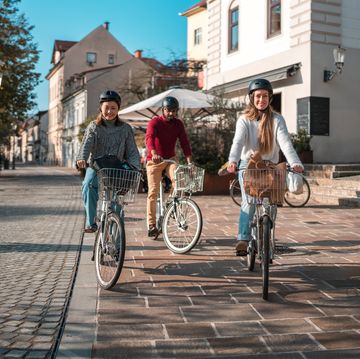
Stamina vs Endurance: What’s the Difference?
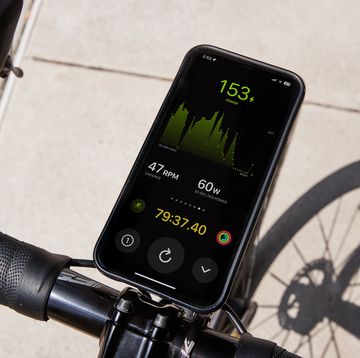
Do You Really Need a Power Meter?
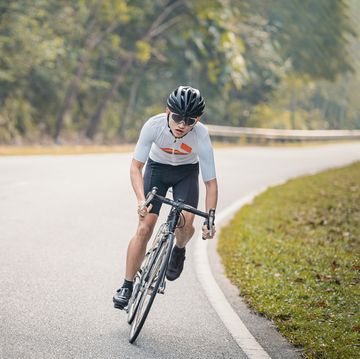
7 Dos and Don’ts of Sprint Training
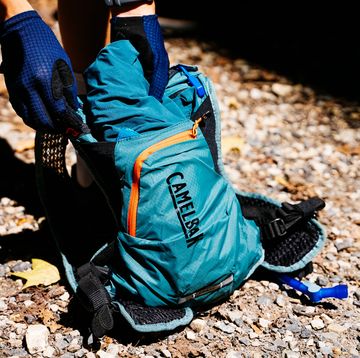
Clean Your CamelBak Bladder in 3 Easy Steps
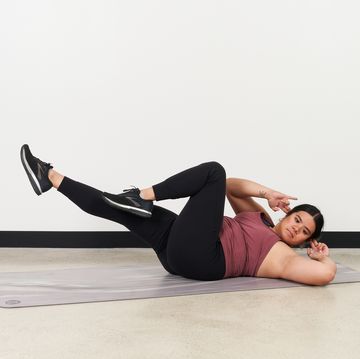
How Exactly to Do Bicycle Crunches
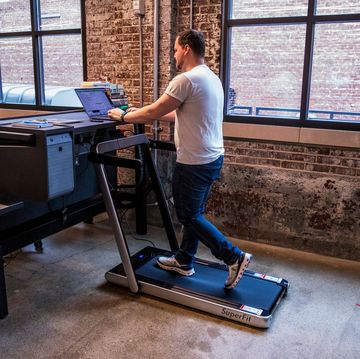
Want Boosted Brain Power? Walk While You Work
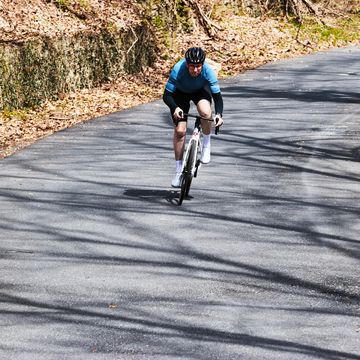
Strength Workouts to Help You Ride Faster
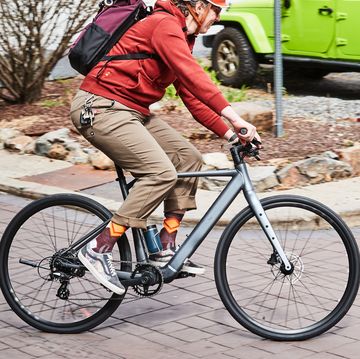
Everything You Need to Know About E-Bikes

How Collegiate Cycling Can Save American Racing
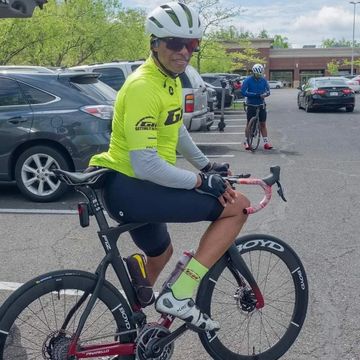
Cycling Tips for Older Riders
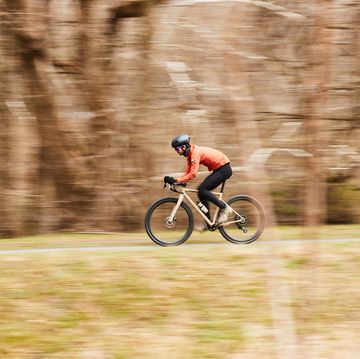
Your 4-Week Training Plan to Get Faster
Trek bikes range: which model is right for you?
- Sign up to our newsletter Newsletter
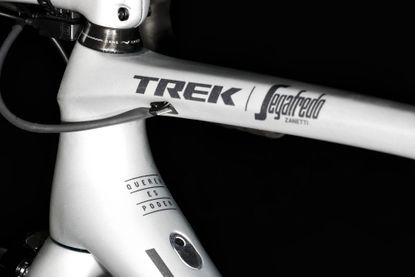
The humble beginning of Trek bicycles took place in the "red barn" - once a carpet warehouse - in Waterloo, USA. The first bikes were steel touring frames , but within three years the brand had expanded substantially.
Eventually outgrowing the barn, Trek moved into a much larger headquarters - still in Waterloo - in the year 1980. From there it began to manufacture road racing bikes, then in 1983 created its first mountain bike before moving into accessories come 1984.
Having started out in steel, Trek moved into developing aluminium bikes in 1985. The first Trek branded full carbon frame came in 1989 - the Trek 5000 had a frame weight of 1.5kg. It was built by an outside manufacturer and discontinued after a year. Trek made its own efforts at carbon, with an in-house production, in 1992 to much greater success.
>>> Trek mountain bikes: which model is right for you?
Now, Trek offers the Madone (aero bike), Domane (endurance bike), Emonda (lightweight race bike) and Checkpoint (gravel bike) as well as the Boone cyclocross and Speed Concept time trial machine.
Trek's OCLV Carbon
You can trust Cycling Weekly. Our team of experts put in hard miles testing cycling tech and will always share honest, unbiased advice to help you choose. Find out more about how we test.
Trek's carbon bikes have always used their own patented 'OCLV carbon' - this stands for Optimum Compaction Low Void. It believes this carbon creates the best compromise between low weight and high strength and stiffness.
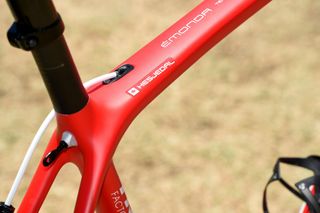
Optimum Compaction refers to the way sheets of carbon are layered into the mould, and optimised via heat and pressure - in Trek's opinion the two treatments are administered to the perfect ratio. Low Void refers to the minimisation of space between the layers of carbon, which might otherwise reduce strength and durability.
In 1995, Trek opened an independent facility inWhitewater, Wisconsin. The idea being that the Waterloo factory would work in frame development only. For those who want to customise their ride, the'Project One' custom paint programme arrived in 2001.
Trek's pro cycling support
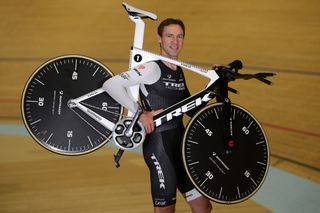
Trek supported now disgraced American cyclist, Lance Armstrong, through his peak years. In 1997, it helped him sign with their sponsored team, US Postal Service Pro Cycling. He won his seven editions of the Tour de Frances on bikes bearing the brand name, but all of said wins were later taken from him following doping violations.
In 2014, the brand sponsored the Trek Factory Racing Team, now calledTrek–Segafredo. In that role, it provided bikes for high profile winners such as Fabian Cancellara and Alberto Contador,as well as Jens Voigt, and notably his Hour Record in September 2014.
In 2020, Trek continued to support the Trek-Segafredo men's and women's race outfits, two highly successful teams.
Trek's acquisitions
Over the years, Trek has made a number of high profile acquisitions. The most famous, perhaps, Gary Fisher bicycles - the mountain bike brand which it took over in 1993.
Later came Bontrager Cycles in 1995 and Electra Bicycle Company in 2014. Bontrager, now Trek's component and apparel brand, maintains the same name as does Electra, the creator of leisure bikes and accessories.
Useful links for road bike shoppers…
Trek's road bike models
Trek is able to offer a wide range of different bikes, each tuned to a slightly different purpose. Some model families are available in a selection of standards (SLR premium carbon, SL carbon, ALR premium aluminium and AL aluminium), and then these come with assorted levels of componentry to suit your price bracket.
To add even more depth to the range, Trek offers many models in two different 'fits'. The Madone and Émonda come as standard in an H2 (traditional) fit, but there are versions in what it calls 'H1' fit. This is more aggressive, shaving off about 30mm on the head tube to create a longer, lower ride. The Domane comes in an H2 'Endurance' fit, with a few models in 'Pro Endurance', again with a longer and lower stance on offer.
Here's a look at the key model families...
With each product is a ‘Buy Now’ or ‘Best Deal’ link. If you click on this then we may receive a small amount of money from the retailer when you purchase the item. This doesn’t affect the amount you pay.

Trek Domane
Our expert review:
Reasons to buy
Reasons to avoid.
The Trek Domane was introduced in 2012. It was created to offer a comfortable ride, the key feature being an IsoSpeed decoupler which separated the seat tube from the top tube, thus reducing vibrations and fatigue.
In 2016 it gained theFront IsoSpeed, which helps to reduce vibrations at the front end without impacting handling. This came alongside a new slider, which alters the level of dampening offered by the rear.
In its most recent update , the Domane took notes from the Madone with an aero fork profile, whilst becoming more versatile thanks to clearance for 38mm tyres (without mudguards, 35mm with). It also gained a downtube compartment for stashing tools (or snacks!).
Though comfort is important to the Trek Domane, it's still a racing frame, and its prowess has been demonstrated by UCI WorldTour riders at major one-day Classics, such as Strade Bianche and the Tour of Flanders. The top Domane bikes come with an H1.5 fit, which was developed with the Trek-Segafredo teams to offer the optimal balance between aerodynamics and endurance.
The Trek Domane - available as a men's build or with women's specific componentry - is a fast selling model, which comes in a range of frame materials.
The Domane SLR uses the lightest carbon Trek offers, the SL is one step down, whilst the AL uses aluminium and is the cheapest of the range.
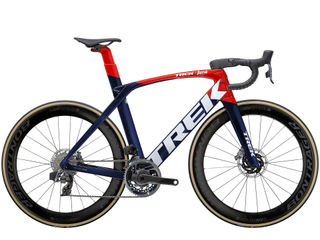
Trek Madone
The Trek Madone is quite another beast, and the bikes come built for men and women; the latter's models with women's saddles and narrower handlebars . With an aggressive geometry and stiffness to boot, it's a road race hero, and aerodynamics have become part of its lifeblood. When we tested five aero bikes , head to head, the Trek Madone came out fastest.
Modern Trek Madone's feature a high level of integration, with the cables tucked away yet reachable via an access point at the top of the down tube.Wind tunnel testing has helped Trek to create theirKVF (Kammtail Virtual Foil) tube shapes, used on the frame and fork. These unconventional tube shapes are designed to further reduce drag, helping the rider/bike unit to slice through the air efficiently.
Because being bumped around doesn't make you faster, the Madone also features an IsoSpeed decoupler at the seat tube and more recently an adjustable one at the head tube, which offers greater compliance whilst still being integrated to prevent adding drag.
The newest model, according to Trek, can offer 17 per cent more compliance through to 21 per cent more stiffness, depending upon your chosen setting. A damper at the seatpost is also said to cut rebound by 13 per cent. All of these stats add up to a bike that can be comfortable and stiff at the same time - and one that earned a place in our 2018 Editor's Choice awards.
The majority of the bikes come in a more relaxed 'H2' geometry, save for the Madone SLR, which is in an 'H1.5' fit - this is designed to allow riders to achieve an H1 fit or an H2, depending upon their set up.

Trek Émonda
Adding more depth to the Trek family is the Trek Émonda, launched in 2014. Designed to be a climbing bike, newer adaptations are capable of negotiating mixed terrains - with disc brakes available and tyre clearance to 28mm.
>>> Trek Émonda range explained
Trek continues to work on developing the Émonda, dropping the weight of the top end Trek Émonda SLR to 640g in a size 56cm (665g with discs) and 1091g for the Trek Émonda SL (1149g with discs). The weight difference is largely achieved by the use of700 Series OCLV carbon on the SLR, as opposed to 500 series on the SL.
The aluminium model has seen some major work and the result earned it a place in the Editor's Choice 2019 awards. The key characteristic we loved was the way it simply didn't look, or ride, like aluminium. A lot of this is down to Trek's 'Invisible Weld Technology' which increases the surface area of the frame, adding to strength and reducing weight. The ALR model's frame weight comes in at a competitive 1112g, or 1131g with discs, and it uses the brand's 300 Series Alpha Aluminium.
The carbon models are available in 'SLR' build or 'SL', the former being the lightest and the latter more affordable. The majority of Trek Émonda bikes cone in an 'H2' fit, but they can be purchased in an 'H1' geometry, if you choose the top end 'Race Shop' version.
There are a few nods to neatness and integration around, such as the use of 'Blendr Integration' which seamlessly mounts Bontrager’s cycling computer, Ionbike lights or even Garmin computers directly to the handlebars. On SLR versions there's ‘Control Freak Cable Management’ which allows for shifter and brake cables to be housed through the frame.
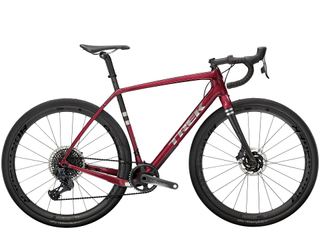
Trek Checkpoint
With gravel and adventure bikes a fast growing category, the Checkpoint is Trek's offering to fill that sector. The crucial element here is that both the SL and ALR frame options come fitted out with 35c gravel tyres, and can accommodate rubber up to 45c. They've all got internal cable routing, to ensure much stays out, whilst the higher end models use 'Control Freak' routing which is neater.
>>> Best gravel bikes: the top models reviewed
If you opt for the carbon SL model, you get vibration dampening from an IsoSpeed decoupler at the rear, too. To provide stability and confidence on light trails as well as comfort on all-day adventures, the geometry is not as aggressive as the road bikes elsewhere in the range. Such all-day rides warrant plenty of kit, so there's mounts for racks and mounts. Similar to elsewhere in the range, there's AL, ALR and SL models.
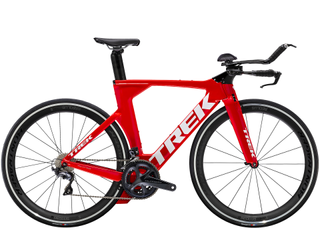
Trek Speed Concept
Trek's Speed Concept time trial bike has been raced by the pros yet is still seen on the amateur race scene as a popular option.
>>> Check out Fabian Cancellara's 2016 Speed Concept
The frames use 500 Series OCLV Carbon, boasting the KVF (Kammtail Virtual Foil) tube shapes described in the Madone, plus a carbon fork with integrated brake and stem - the key goal being cutting through the air quickly.There's space to fit Trek's SC Draft Box and SC Sped Box, largely used by triathletes carrying snacks.
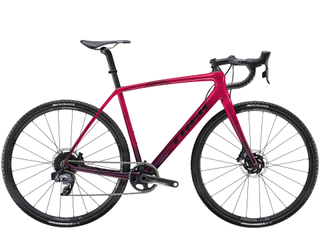
Trek Boone 5
Trek's got plenty of experience in the muddy realm of off-road cycling - and they've got a selection of cyclocross bikes. The Trek Boone 7 model comes with hydraulic disc brakes, a one-by crank and 12-speed cassette and they've all got Bontrager's own 33c cyclocross tyres.
The frame material is Trek's 600 series OCLV carbon, and there's front and rear IsoSpeed decouplers to help riders negotiate the mud without excess transfer of vibration. Combining the mud ready tyres, disc brakes, 'cross focused cable routing and geo into an aluminium package is the Trek Crockett family.
They key differentiation is the frame material, which is300 Series Alpha Aluminium, and there's no decoupler. However, it's still a performance bike that's ready to race.
Thank you for reading 20 articles this month* Join now for unlimited access
Enjoy your first month for just £1 / $1 / €1
*Read 5 free articles per month without a subscription
Join now for unlimited access
Try first month for just £1 / $1 / €1
Get The Leadout Newsletter
The latest race content, interviews, features, reviews and expert buying guides, direct to your inbox!
Michelle Arthurs-Brennan the Editor of Cycling Weekly website. An NCTJ qualified traditional journalist by trade, Michelle began her career working for local newspapers. She's worked within the cycling industry since 2012, and joined the Cycling Weekly team in 2017, having previously been Editor at Total Women's Cycling. Prior to welcoming her daughter in 2022, Michelle raced on the road, track, and in time trials, and still rides as much as she can - albeit a fair proportion indoors, for now.

British rider remembers his victory at Paris-Roubaix juniors
By Tom Thewlis Published 4 May 24

Alfonsina Strada made headlines when she entered the 1924 edition of the Giro d’Italia, under the name 'Alfonsin', and the story of her grit and determination to finish against all odds lives on today
By Giles Belbin Published 4 May 24
Useful links
- Tour de France
- Giro d'Italia
- Vuelta a España
Buyer's Guides
- Best road bikes
- Best gravel bikes
- Best smart turbo trainers
- Best cycling computers
- Editor's Choice
- Bike Reviews
- Component Reviews
- Clothing Reviews
- Contact Future's experts
- Terms and conditions
- Privacy policy
- Cookies policy
- Advertise with us
Cycling Weekly is part of Future plc, an international media group and leading digital publisher. Visit our corporate site . © Future Publishing Limited Quay House, The Ambury, Bath BA1 1UA. All rights reserved. England and Wales company registration number 2008885.
2023 Trek Emonda vs Madone vs Domane
The current Trek road bike lineup, the Emonda, Madone and Domane offer a blend of innovation, performance, and style. Bike expert Alex Lee compares these Trek models, discussing their features, builds, and pricing.
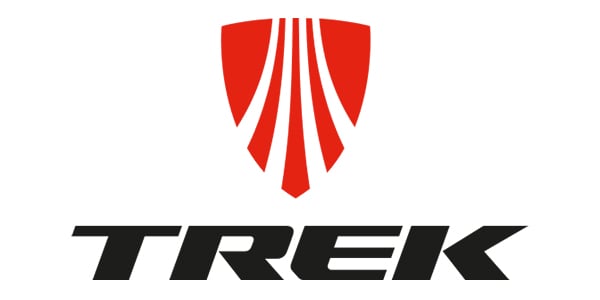
Trek bike names are easy to understand. There are three distinct models; Emonda , Madone , and Domane . Each model is designed to perform well in a particular type of ride.
The general rule of thumb below will give you a clear idea of what the bike is about, where it sits in the lineup, and how it’s specced.
- SLR models use the top-of-the-line OCLV 800 carbon.
- SL models use the mid-range, OCLV 500 carbon.
- ALR is for aluminum frames.
- Models ending with 9 use Shimano Dura-Ace Di2 or SRAM Red AXS groupsets.
- Models ending with 7 use Shimano Ultegra Di2 or SRAM Force AXS groupsets.
- Models ending with 6 use Shimano 105 Di2 or SRAM Rival AXS groupsets.
- Models ending with 5 use Shimano 105 R7000 groupset.
Trek Emonda
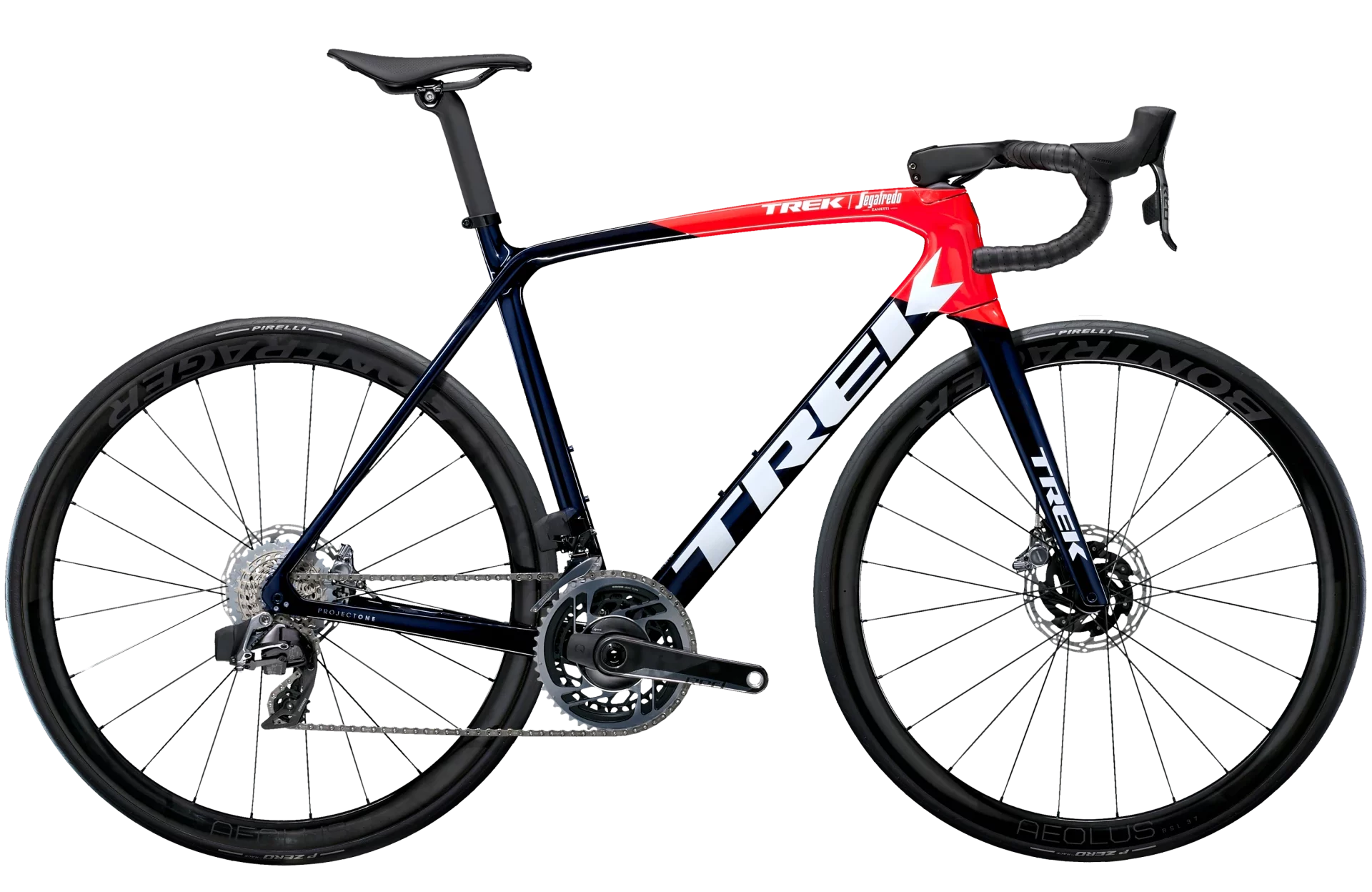
The Trek Emonda is a lightweight bike for the high mountains.
The lightest Trek Emonda frame weighs less than 700g using Trek’s OCLV 800 carbon. This is the bike Richie Porte rode to his third place in the 2020 Tour de France.
The SLR is the lightest and most expensive atop the Trek Emonda models. There are six Emonda SLR options, specced electronic shifting groupsets from SRAM or Shimano.
Next in line is the SL, the mid-range, more budget-friendly option. It has the same frame design and geometry as the SLR but uses the OCLV 500 carbon instead. The groupset choices are Shimano Ultegra Di2 , Shimano 105 Di2 , SRAM Force AXS , or SRAM Rival AXS .
The Trek Emonda SLR and SL framesets are also available separately.
Trek Emonda vs others
2024 Canyon Ultimate vs Trek Emonda
2024 Orbea Orca vs Trek Emonda
2024 Pinarello Dogma F vs Trek Emonda
2024 Pinarello F vs Trek Emonda
2024 Scott Addict RC vs Trek Emonda
2024 Specialized Aethos vs Trek Emonda
2024 Specialized Tarmac SL7 vs Trek Emonda
2024 Specialized Tarmac SL8 vs Trek Emonda
2024 Trek Emonda vs BMC Teammachine SLR
2024 Trek Emonda vs Cannondale SuperSix Evo
Trek Madone
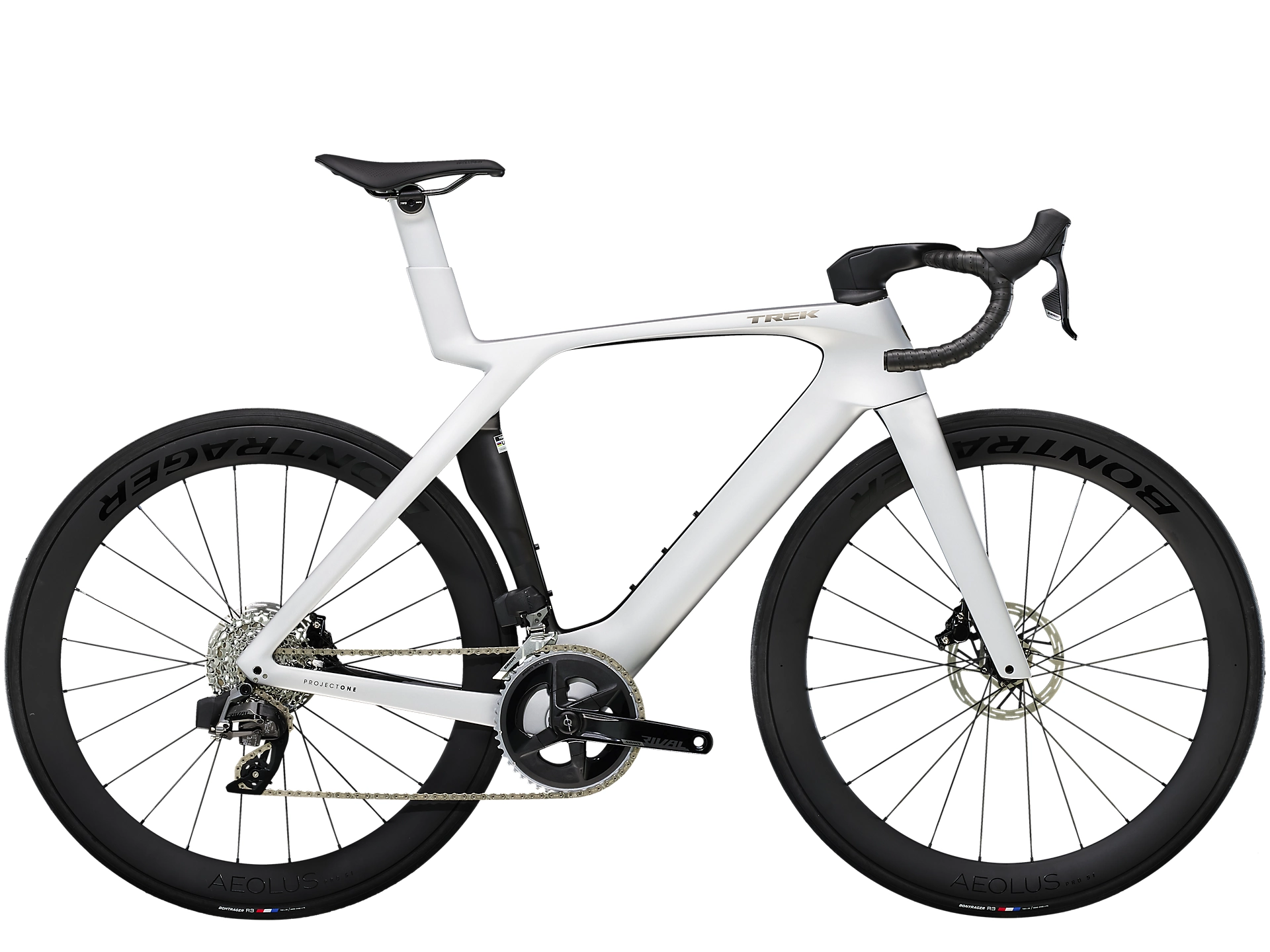
Dubbed the ultimate superbike, the Trek Madone is all about maximizing aerodynamics and speed .
Trek refreshed the Madone in June 2022, just before the Tour de France started. The new Trek Madone features a radical-looking seat tube with a big hole. The previous IsoSpeed system, which allows the seatpost to flex for extra comfort, is replaced by the IsoFlow Technology. According to Trek, the IsoFlow technology adds an aerodynamic advantage, reduces weight, and smooths the road ahead.
The range-topping Madone SLR is built on the Trek’s lightest OCLV 800 carbon, with a one-piece carbon handlebar. The Madone SL models are still based on the previous Madone frame design and use the OCLV 500 carbon.
The Madone SLR frameset is also available separately.
Trek Madone vs others
2024 BMC Timemachine Road vs Trek Madone
2024 Canyon Aeroad vs Trek Madone
2024 Cervelo S5 vs Trek Madone
2024 Giant Propel Advanced vs Trek Madone
2024 Orbea Orca Aero vs Trek Madone
2024 Pinarello Dogma F vs Trek Madone
2024 Scott Foil RC vs Trek Madone
Trek Domane
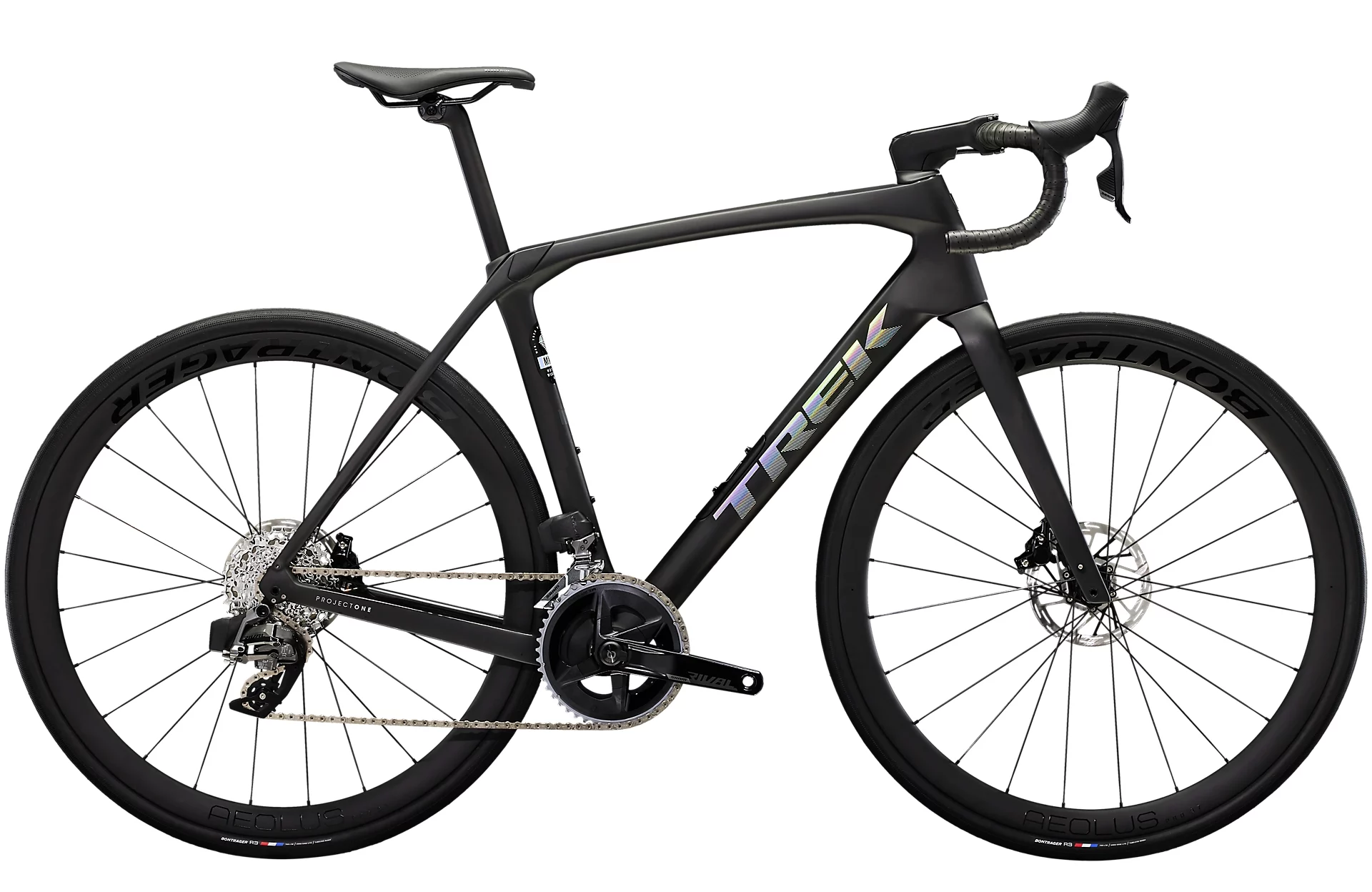
The Trek Domane is designed as an all-day endurance bike .
It can also be referred to as all-road as its wider tire clearance of up to 38c can tackle hard-packed gravel and cobblestones like those in the Paris-Roubaix race . Trek built the Isospeed dampening system in the front and rear to achieve this.
There are carbon and aluminum versions of the Domane. The SLR uses the higher grade, OCLV 800 carbon compared to the SL on the standard, OCLV 500 carbon.
The Trek Domane SL and SLR frames are also available separately for those after a custom-built bike.
Trek Domane vs others
2024 Canyon Endurace vs Trek Domane
2024 Pinarello X vs Trek Domane
2024 Specialized Roubaix vs Trek Domane
2024 Trek Domane vs BMC Roadmachine
2024 Trek Domane vs Cannondale Synapse
2024 Trek Domane vs Cervelo Caledonia
2024 Trek Domane vs Giant Defy Advanced
Trek bikes FAQ
What is the difference between OCLV 500 vs 800 carbon?
The OCLV (Optimum Compaction, Low Void) carbon is a proprietary carbon fiber manufacturing technology developed by Trek. It’s available in OCLV 500 and 800.
- OCLV 500 is a lower-grade carbon but still offers a high level of performance. It has a slightly lower carbon modulus, meaning it’s a bit less stiff and heavier than OCLV 800. OCLV 500 is used in all models with SL .
- OCLV 800 is the highest-grade carbon fiber used by Trek. The carbon modulus is higher, making it stiffer and lighter. The manufacturing process is more refined, using more advanced carbon and resins, leading to a bike frame that provides top performance levels for stiffness, weight, and strength. OCLV 800 is used in all models with SLR .
It’s worth noting that the different OCLV grades don’t only refer to the material itself but also to the manufacturing techniques used to form the carbon fiber into bike frames. Higher-grade carbon requires more precise manufacturing techniques to take full advantage of its superior material properties.
What is the difference between Trek Emonda and Madone?
The Trek Emonda is designed for climbers and all-around riders who want a lightweight, responsive bike with more traditional geometry. In contrast, the Trek Madone is an aerodynamic race machine built for speed and aggressive riding on flat and rolling terrain.
What is the difference between Trek Emonda and Domane?
The Trek Emonda is designed for climbers and all-around riders who want a lightweight, responsive bike with more traditional geometry.
The Trek Domane is an endurance-focused bike built for comfort on long rides and rougher surfaces, such as cobblestones or poorly maintained roads.
What is the difference between Trek Madone and Domane?
The Trek Madone is an aerodynamic race machine built for speed and aggressive riding on flat and rolling terrain. In contrast, the Trek Domane is an endurance-focused bike designed for comfort on long rides and rougher surfaces, such as cobblestones or poorly maintained roads.
How long is Trek’s warranty?
All Trek bikes come with a lifetime warranty for the frame and fork . This is only applicable to the first owner. Second and subsequent owners are entitled to a 3-year warranty from the initial purchase date.
More about Trek’s warranty policy .
Does Trek have women-specific models?
Trek addresses the women-specific models by having frame sizes as small as 44 for riders between 4’ 11” to 5’ (150 to 153 cm).
These smaller bikes have several modifications, such as shorter crankarms, compact cranksets, shorter stems, narrower handlebars, shorter reach brake levers, and women-specific saddles.
What is the difference between Trek’s H1 and H2 geometry?
The H1 and H2 refer to the frame geometry . Most Trek Emonda and Madone have an H2 geometry known as the traditional fit.
H1 is a racing geometry with the head tube 30mm shorter to achieve a lower and more aggressive position on the bike. Most professional cyclists ride the H1 geometry.
What is Project One?
Project One allows you to customize every detail of your dream bike, from colors to components . You can design it through Trek’s website or a Trek-authorized retailer. Bikes available under Project One are the Domane, Emonda, Madone, and Speed Concept (TT).
Are Trek bikes still made in the USA?
As of December 2017, Trek no longer makes any bikes in their Waterloo and Whitewater facilities in Wisconsin. Before that, they used to make around 20,000 of their high-end bikes (SLR models) yearly there. They are made in Asia and sent to Wisconsin for painting and final assembly.
Which professional cycling team ride Trek bikes?
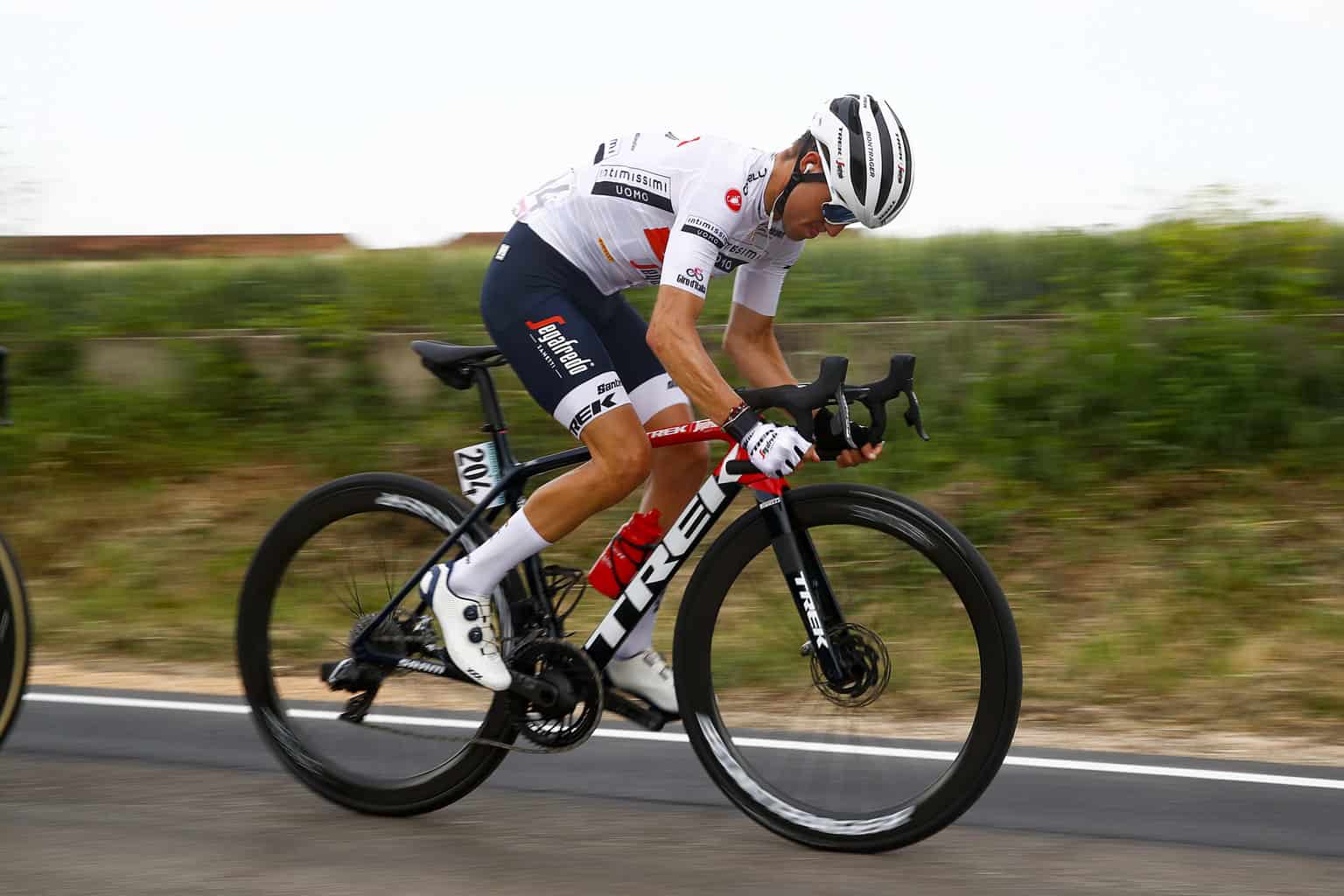
Today, Trek sponsors its own World Tour team, Trek-Segafredo . The team has men’s and women’s pro teams under the same name. Today riders such as multiple Grand Tour winner Vincenzo Nibali, and former men and women road race world champions , Mads Pederson and Lizzie Deignan currently race on a Trek bike.
In the past, several high-profile riders, such as Fabian Cancellara and Alberto Contador, have ridden Trek bikes during the later stages of their career.

Alex Lee is the founder and editor-at-large of Mr. Mamil. Coming from a professional engineering background, he breaks down technical cycling nuances into an easy-to-understand and digestible format here.
He has been riding road bikes actively for the past 12 years and started racing competitively in the senior category during the summer recently.
Mr. Mamil's content is for educational and entertainment purposes only. The content is not a substitute for official or professional advice. Please do your own due diligence.
Mr. Mamil participates in the Amazon Services LLC Associates Program, an affiliate advertising program designed to provide a means for us to earn fees by linking to Amazon.com and affiliated sites. We also participate in various other affiliate programs, and at times we earn a commission through purchases made through links on this website.
Privacy Policy
Website Terms
© Mr. Mamil, 2023
Three ways to explore the open road
Carbon Domane
Carbon Domane delivers incredible endurance comfort, ultimate versatility, and pro-level speed in one podium-topping package. Enjoy ultra-light OCLV Carbon, newly refined rear IsoSpeed, and sleek storage options.
- Shop Domane SL
- Shop Domane SLR
Aluminum Domane
Domane AL offers classic Domane speed, comfort, and versatility at an exceptional value. You get a light and durable Alpha Aluminum frame, a comfort-first carbon fork, and mounts for a top tube bag, rack, and fenders.
- Shop Domane AL
Electric Domane+
Electric Domane+ models offer the same Domane comfort you know and love, plus a natural-feeling assist that flattens hills, shrinks long distances, and lets you take the tailwind with you. From the ultra-light and fast Domane+ SLR to the high-value Domane+ AL, there’s an e-road bike for everyone.
- Shop Domane+
Pure race pedigree
Domane was developed in collaboration with the pros of Trek-Segafredo to create a race-ready bike that’s fast and capable enough for the world’s most epic events – including the infamous Paris-Roubaix, where Elisa Longo Borghini and Lizzie Deignan raced Domane to victory two years in a row.
- Read the story
"Domane is: Special. A great bike made better. A bike for the modern road rider: Freaking fast, wonderfully comfortable, and oh so practical.” - Bicycling
“The ride is simply sublime. Its balance between smooth, vibration-eliminating comfort, sharp handling, and out-and-out speed combines with an ability to get off the beaten track." - BikeRadar
"It absorbs all road vibrations, operates quietly, and accelerates on flats deceptively quickly… I'll be in for a rude awakening after returning to a road bike without IsoSpeed." - VeloNews
"The most notable transition from road to gravel was the sense of ease. Usually, when you roll from tarmac to stones, the bike can feel skittish and nervous (rider or bike). The Domane feels stable, and instead of holding your breath, you breathe out." - BikeRumor
Explore similar models
Checkpoint is made for adventure, whether you’re racing Unbound Gravel, bikepacking on a remote logging path, or cruising down the bike path. It’s fast, comfortable, and smooth, with a versatile design that helps you reach all the places you dream of exploring on two wheels.
- See the bike
Soar up climbs and fly over flats with the crazy light and crazy fast Émonda road bike. Complete with our best carbon, speedy design details, and aerodynamic tube shaping, Émonda is smooth at high speeds, confident in corners, and fast wherever you ride it.
Appelez-nous !
03 90 46 19 52
Nous avons enregistré votre recherche. Consultez votre e-mail régulièrement pour nos suggestions. Bonne route !
Dans cet article
Choisir entre le trek emonda et le trek domane.
Publié le 4 janvier 2023
La gamme de route Trek est composée de trois modèles (qui ont la particularité amusante d’être des anagrammes les uns des autres 😉) : le Madone, le Domane et l’Emonda . Le Trek Madone est le vélo aéro star de la marque. Dans ses versions récentes, il dispose notamment de la technologie IsoFlow, une étonnante cavité sous le tube de selle censée améliorer la pénétration dans l’air. Le Domane et l’Emonda sont en revanche beaucoup plus proches l’un de l’autre. Ils sont plus confortables et plus passe-partout que le Madone , mais ils ont bien chacun leur spécialité. Quelles sont les différences entre le Trek Emonda et le Trek Madone ? Dans cet article, nous allons tout vous dire sur ces deux modèles pour vous aider à choisir celui qu’il vous faut.
Confort et endurance : avantage Trek Domane
Le Domane, c’est clairement LE vélo d’endurance de la marque Trek. Avec ce vélo, la devise est claire : confort, plaisir et longues sorties !
Cette caractéristique, le Trek Domane le doit notamment à la technologie IsoSpeed. Toujours à la pointe en matière d’innovation, la marque américaine a créé un design très particulier qui fait que le vélo absorbe la plus grosse partie des cahots de la route et soulage ainsi le cycliste.

Concrètement, ça marche comment ? Le tube de selle est légèrement désolidarisé du reste du cadre. Cela lui offre assez de liberté verticale pour ne pas trop subir les mouvements du cadre. En conséquence, le cycliste est lui aussi beaucoup moins secoué.
Au-delà du Domane, Trek a greffé ce dispositif sur les vélos de route qui roulent sur les Strade Bianche ou sur les pavés. On le retrouve aussi (évidemment) sur les VTT Trek et le très bon gravel de la marque : le Checkpoint.
Son confort, le Domane le doit aussi à sa géométrie : un tube supérieur incliné vers l’arrière et un triangle de cadre de faible superficie. Résultat : la position de conduite est relevée juste comme il faut. De quoi vous offrir la possibilité de rouler très longtemps sans avoir mal aux lombaires !
Ce vélo est vraiment parfait pour le bikepacking et l’ultra-distance. D’autant plus, que grâce à son cadre ultra-léger en OCLV Carbon, il est aussi très facile à emmener dans les ascensions… même avec de grosses sacoches un peu partout !
D’ailleurs, petit détail sympa : la dernière version du Domane est dotée d’un rangement intégré au tube horizontal pour caler des petits outils de réparation par exemple 🔧

Et en bon vélo d’endurance, le dégagement des pneus est bien large pour laisser passer des pneus gravel, jusqu’à 38 mm de section… Ça élargit grandement le champ des possibles, non ?
Mais attention, quand il faut aller vite et envoyer des watts, on peut aussi compter sur le Trek Domane ! Demandez donc à Lizzie Deignan et Elisa Longo Borghini qui ont remporté Paris-Roubaix respectivement en 2021 et 2022 sur ce vélo 🏆
En bref, un excellent vélo qui réconcilie confort et bon niveau de performance !
À noter que le Trek Domane existe aussi dans une version aluminium (technologie Alpha Aluminium), et dans une version Domane+ avec une assistance électrique savamment dissimulée dans le tube diagonal.
Trek Emonda : performant et léger

Même s’ils ont des similitudes, l’Emonda a une autre philosophie : grimper le plus vite possible. C’est vraiment un vélo de chasseur de KOM/QOM ! Léger, agile et aéro juste comme il faut, le Trek Emonda est un des meilleurs vélos de montagne du marché !
D’ailleurs, on l’avait officiellement adoubé dans notre sélection TCH des 5 meilleurs vélos pour grimper 🥇
Dans sa version la plus récente équipée du carbone OCLV 800, le cadre pèse moins de 700 grammes, et le vélo complet peut être inférieur à 8 kg ! Ce poids record permet de gagner un avantage significatif dans les montées, là où chaque gramme compte.
La position de pédalage est aussi complètement pensée pour passer un maximum de puissance dans les cols et les bosses. En comparaison du Domane, on va avoir un tube supérieur beaucoup plus proche de l’horizontale, et donc une géométrie semblable à ce qu’on retrouve sur la plupart des vélos faits pour rouler vite… et fort !
Tout cela fait de ce vélo le chouchou de l'équipe Lidl-Trek pour les étapes de montagne. Il leur permet en plus d’être très performant sur les parties les plus roulantes grâce une aérodynamique très travaillée (surtout pour un vélo de montagne !).
Trek Domane ou Trek Emonda : finalement lequel choisir ?
Pour bien choisir entre le Trek Emonda et le Trek Domane, il faut selon nous se poser trois questions : quel est mon terrain d’entraînement habituel ? quels sont mes objectifs ? quel est mon budget ?
Performances
La principale différence entre le Trek Emonda et le Trek Domane, c’est le niveau de performances.
Au guidon de l’Emonda dans un col, vous comprendrez rapidement que la seule limite sera votre condition physique. Sa conception lui permet de tirer parti de chaque coup de pédale pour limiter au maximum les pertes de watts. En danseuse, il se montre agile et aérien. On se prendrait volontiers pour le grand Alberto Contador (qui a fini sa carrière sur ce vélo chez Trek-Segafredo).
Le Domane est clairement en dessous du Emonda en montagne, et sur le plat le Madone le dépasse de très (très) loin. Certes, vous pourrez aller chercher de jolies moyennes, mais il vous manquera toujours un petit quelque chose pour vraiment performer. Et on ne peut pas lui en vouloir ! C’est un vélo d’endurance, de longues distances et de plaisir avant tout.
Le Trek Domane conviendra également très bien aux débutants puisque la position de pédalage est beaucoup moins exigeante. Ça peut être une bonne solution pour s’habituer à la pratique du vélo de route, avant de se tourner vers un modèle plus agressif.
Si vous cherchez un vélo confortable pour des sorties tranquilles (mais pas non plus « pépères » !) ou que vous envisagez de partir en vacances à vélo, alors le Trek Domane est fait pour vous. Dans ce domaine, c’est clairement l’un des meilleurs, comparable au Cannondale Synapse ou à l’illustre Specialized Roubaix, pour rester sur des modèles américains.
L’Emonda, c’est davantage un vélo pour se faire mal aux jambes, pour aller au bout de ses limites sur un col pendant une heure, ou pour passer des pentes qui affichent un pourcentage à deux chiffres ! C’est un excellent choix si vous roulez souvent sur des routes vallonnées ou montagneuses sur lesquelles le Madone montrera un peu ses limites.
Terrain de jeu
Enfin, dernier critère à prendre en compte : votre terrain d’entraînement.
Si vous empruntez souvent des routes au revêtement accidenté ou si vous aimez de temps en temps quitter le bitume pour des sentiers terreux et des chemins gravillonnés, le Domane est le partenaire idéal. La technologie IsoSpeed est un vrai plus technologique, vous n’en finirez plus de remercier les brillants ingénieurs qui en sont à l’origine.
Pour aller toujours plus loin dans le confort, le Trek Domane pourra aussi accueillir des pneus plus larges et crantés (jusqu’à 38 mm comme on le disait plus haut). C’est définitivement un vélo qui surfe sur l’essor du cyclisme en mode all-rounder pour une pratique très polyvalente !
💡 Petit focus sur les pneus : si vous voulez aller au-delà de 38 mm, c’est que vous ne cherchez pas vraiment un modèle de route au fond 😉 On vous conseille plutôt de vous tourner vers un vélo gravel . Pour rester chez Trek, le Ckeckpoint pourra être équipé de pneus de 45 mm.
Et le budget dans tout ça ? Pas de grand gagnant de ce côté. Qu’on soit sur la gamme SL ou sur du SLR (avec un cadre carbone encore plus travaillé), le Domane et le Emonda font à peu près jeu égal pour un modèle de qualité équivalente. La fourchette est quand même large : de 3 000 euros pour un Domane SL5 à 12 000 euros pour un Emonda SLR 9 AXS.
… En tout cas, ce sont les tarifs si on ne regarde que du côté du neuf ! Car vous le savez, chez The Cyclist House, on vous propose les mêmes modèles à prix beaucoup plus doux : de 30 à 50 % moins cher pour un Trek d’occasion révisé par un mécanicien qualifié ! Et tout ça, sans renoncer à la qualité du service après-vente : « satisfait ou remboursé » pendant 30 jours, garantie pendant un an et offre de reprise la première année. On peut même vous proposer une offre de rachat de votre ancien vélo !
Nous espérons que cet article vous a donné assez d’éléments pour vous aider à faire le meilleur choix. Si vous ne parvenez vraiment pas à trancher, sachez que d’autres constructeurs proposent des vélos à mi-chemin entre le Domane et l’Emonda. Par exemple, le BMC Roadmachine est un très bon vélo pour grimper ET un excellent vélo d’endurance.
N’hésitez pas à découvrir tous nos vélos de route d’endurance .

Florian Topin
Passionné par le vélo depuis toujours, Florian est intarissable quand on le lance sur le sujet ! Ça tombe bien, en tant que rédacteur web, il est libre d’écrire pendant des heures sur son sport fétiche. De Lille, où il habite, il traverse fréquemment la frontière belge pour partir à l’assaut des monts flamands avec son Giant TCR Advanced. Chemins pavés, vent, pluie… Florian a l’habitude des conditions difficiles mais il ne brille jamais vraiment sur les pentes du terrible mont Kemmel. Écolo convaincu, il est persuadé que le vélo reconditionné, c’est l’avenir !
- Guides d'achat /
- Marques et composants /
2 commentaires
Awsome article comparing the 2 models. I have a AL 2 domane with carbon wheels. I love the bike, but I think I’m ready for a little more speed. May upgrade to the al 5 domane or the al 5 emonda. I hate to give up on comfort. 59yr old
Je roule sur deux Trek depuis 10 ans (un domane et un emonda justement) et j’avais jamais remarqué que c’était des anagrammes 🤣 Et sinon, bravo, très bon article !
Laissez un commentaire
Veuillez noter que les commentaires doivent être approuvés avant d'être affichés
Si cet article vous a plu...
Giro 2024 : parcours, profil des étapes et favoris, mont ventoux à vélo : comment bien se préparer , les meilleurs vélos de route de 2024, paris-roubaix 2024 : parcours, passages mythiques et favoris de cette épreuve, top 10 des cyclistes à suivre en 2024, comment choisir son dérailleur arrière pour vélo de route , specialized tarmac, roubaix, aethos : quel vélo choisir en fonction de sa pratique , les objectifs de cédrine kerbaol pour 2024 et les courses cyclistes femmes uci, reprendre le vélo après un long arrêt : un retour en selle en douceur, look 795 blade, 785 huez, 765 optimum : quel vélo de route look choisir , quel est le meilleur vélo pour grimper la sélection the cyclist house, commencer le vélo de route : nos conseils pour bien démarrer, quelle largeur de pneu pour vélo de route et vélo gravel , régler son vélo de route : nos conseils, les différences entre vélo de route et gravel, quel vélo après 60 ans une nouvelle jeunesse sur 2 roues , les vélos du tour de france 2023 : zoom sur les bolides du peloton, découvrez nos vélos.
- Reconditionné
Giant TCR Advanced Pro Disc 1 Ultegra - 2022, M/L
2.899€ 4.400€
BMC Roadmachine 01 ONE Dura-Ace Di2 - 2022, 56cm
5.499€ 11.500€
Pinarello Paris 501 Think 2 - 2014, 59,5cm
1.899€ 4.700€
Bianchi Aria Aero 105 Di2 - 2023, X-Large / 59cm
2.999€ 4.350€
Trek Domane SL 6 Gen 4 - 2023, 54cm
3.199€ 5.800€
0 kilomètres
Orbea Orca M31eLTD PWR - 2023, 55cm
4.299€ 6.000€
Adris Asphalte - 2023, Large
1.099€ 1.400€
Specialized Turbo Creo SL Expert EVO - 2020, Large
4.099€ 8.500€
Ridley Fenix SLiC Ultegra - 2023, Small
2.699€ 3.950€
Scott Addict Team Issue Ultegra Di2 - 2016, 54cm
2.199€ 6.500€
Adris Asphalte - 2023, Medium
899€ 1.100€
Adris Airline - 2023, Medium
1.299€ 1.700€
Orbea Orca M21eLTD PWR Force eTap AXS - 2023, 51cm
5.299€ 8.000€
Orbea Orca M30iLTD PWR - 2023, 55cm
4.399€ 5.800€
Orbea Orca M21eLTD PWR Force eTap AXS - 2023, 53cm
Specialized roubaix sl4 expert - 2016, 54cm.
1.599€ 3.800€
Nouveaux arrivages toutes les semaines !
Verwenden Sie dieses Popup, um ein Anmeldeformular für eine Mailingliste einzubetten. Alternativ können Sie es als einfachen Call-to-Action mit einem Link zu einem Produkt oder einer Seite verwenden.
Altersüberprüfung
Durch Klicken auf die Eingabetaste bestätigen Sie, dass Sie alt genug sind, um Alkohol zu konsumieren.
- Vendre // Échanger
Votre panier est vide.
日本最大級のスポーツサイクル専門店!神奈川県最大級ブランドパワーショップ!
ワイズロード横浜ワールドポーターズ店 Y'sRoad yokohama
横浜・みなとみらいエリア最大級 スポーツサイクル全ジャンル対応 総合大型店

ネットで買って店頭で受け取り、オンラインストア店頭受取カウンター設置店

バーチャルサイクリング体験コーナー常設店 インドアトレーナー取り扱い量 エリアNo.1

最適なサイズをご提案 バイオレーサーで理想のポジション作りをサポートします

- ワイズロードオンライン
- 営業時間などの店舗からのお知らせ
- 横浜店 Y's Techセンター / 修理 オーバーホール
- 「バイオレーサー」最適ポジションで快適ライド!
- 【試乗サービス】試そう×きこう
- バーチャルサンデーライド 参加費無料!ご自宅からご参加!
- 初めてだから知りたい 【ミニ講習会】
- レポート・報告・お知らせなど
- yokohamaアウトレット
- アクセサリー・一般用品
- 横浜店オリジナル完成車
- Khodaabloomルーム
- ◆CANNONDALE◆
- ◆CIPOLLINI◆
- ◆PINARELLO◆
- 貴方だけのバイクを ~PROJECT ONE~
- ◆MONDRAKER◆
- スタッフが惚れ込んで購入したパーツたち
- 商品紹介 -ITEM-
- 【SALE】ケーブル内装に対応したカーボンフレームのクロスバイク「TREK FX SPORT 4」がSALE価格で入荷!
- イベント -EVENT BLOG-
- 火曜&水曜ラン 04/08~09
2024/05/04 19:51
【SALE】ケーブル内装に対応したカーボンフレームのクロスバイク「TREK FX SPORT 4」がSALE価格で入荷! by: 宮崎貢輔
いつもワイズロード横浜ワールドポーターズ店をご利用いただきありがとうございます。
今回はTREK FESTでお買い得になっているクロスバイクが再入荷しましたのでご紹介。
- 1 TREK FX SPORT 4
- 2 カーボンフレーム採用のクロスバイク
- 3 ケーブル類はステム下から内装
- 4 1×10のシンプルなドライブ
- 5 走る場所や環境を選ばない
- 6 この他にもFXシリーズ在庫しています!
TREK FX SPORT 4
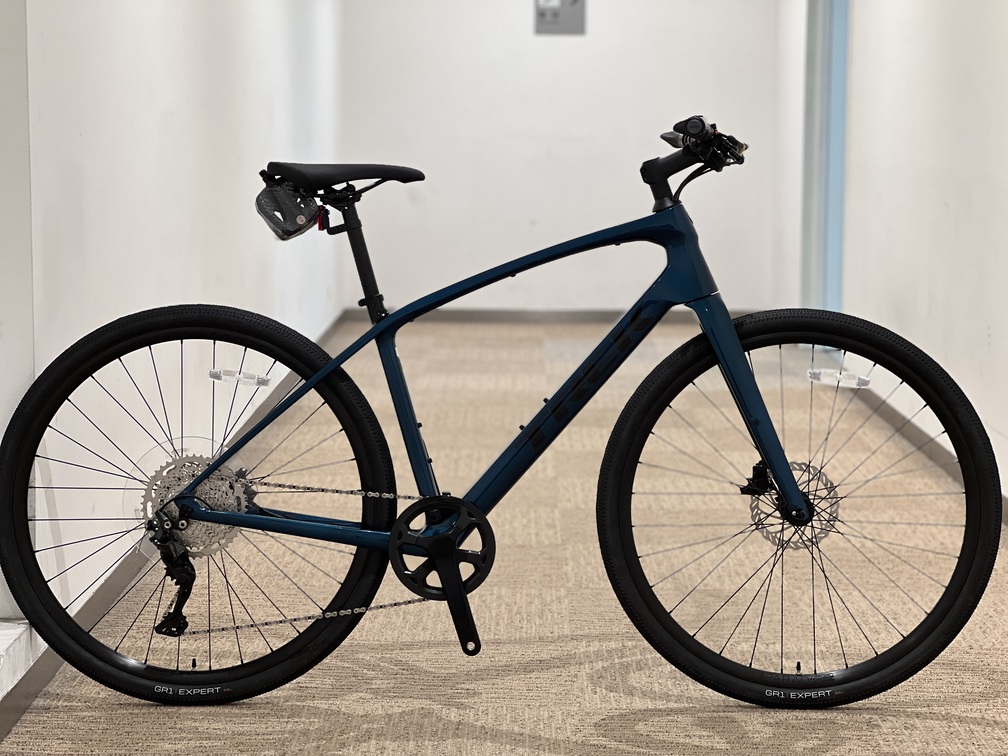
税込価格¥263,890 → 6/9までの特別価格¥211,112 店頭在庫カラー/サイズ Dark Aquatic/M 適正身長170cm前後
カーボンフレーム採用のクロスバイク
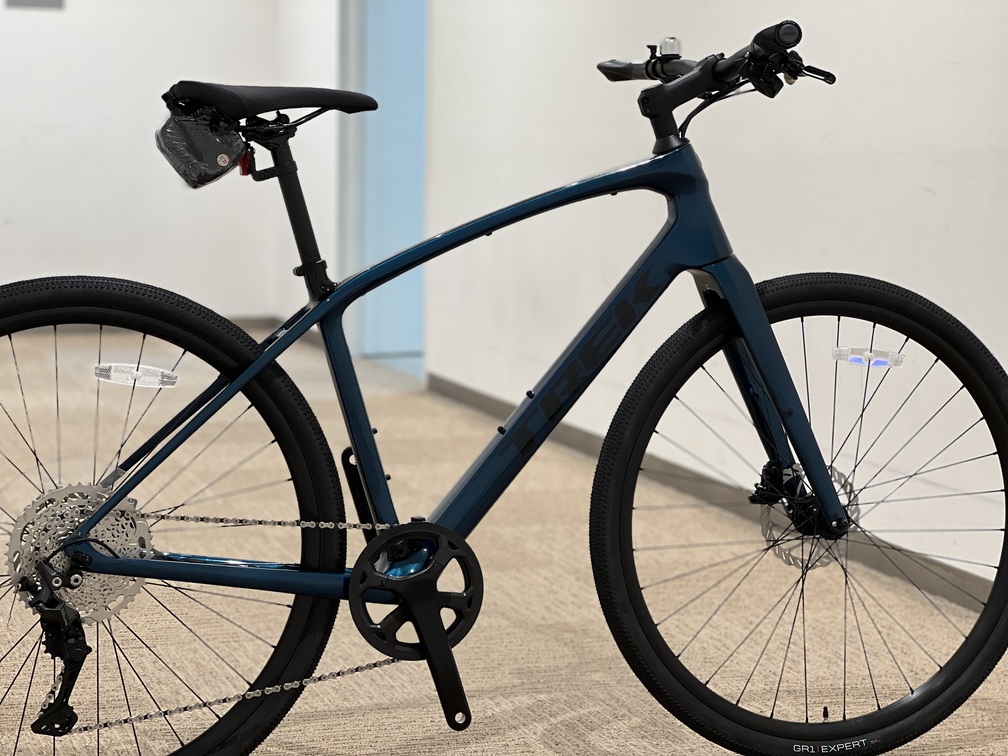
クロスバイクの多くは安価かつ頑丈なアルミフレームやクロモリフレームを採用しており、5~15万円の価格帯で種類が豊富です。一方カーボンフレームを採用したクロスバイクはかなり少なく価格帯的にはアルミフレームのロードバイク、それもEMONDA ALRなどの所謂アルミフレームのフラッグシップモデル級になります。そうなってくると「ロードバイクが良いじゃん」や「予算が合わない」など出てきますね。
ですが大手メーカーであるTREKは5年以上前からカーボンフレームのクロスバイクをラインナップしており、トレンドに合わせてモデルチェンジし細部をアップデート、現在の形へと至りました。ロードバイクにも使われていたOCLV 400 CARBONを採用しています。
ロードバイクのような爽快さが欲しいけどドロップハンドルはちょっと…なんて方やサイクリング以外にも長距離の通勤通学など幅広く使いたい方にオススメです。
ケーブル類はステム下から内装
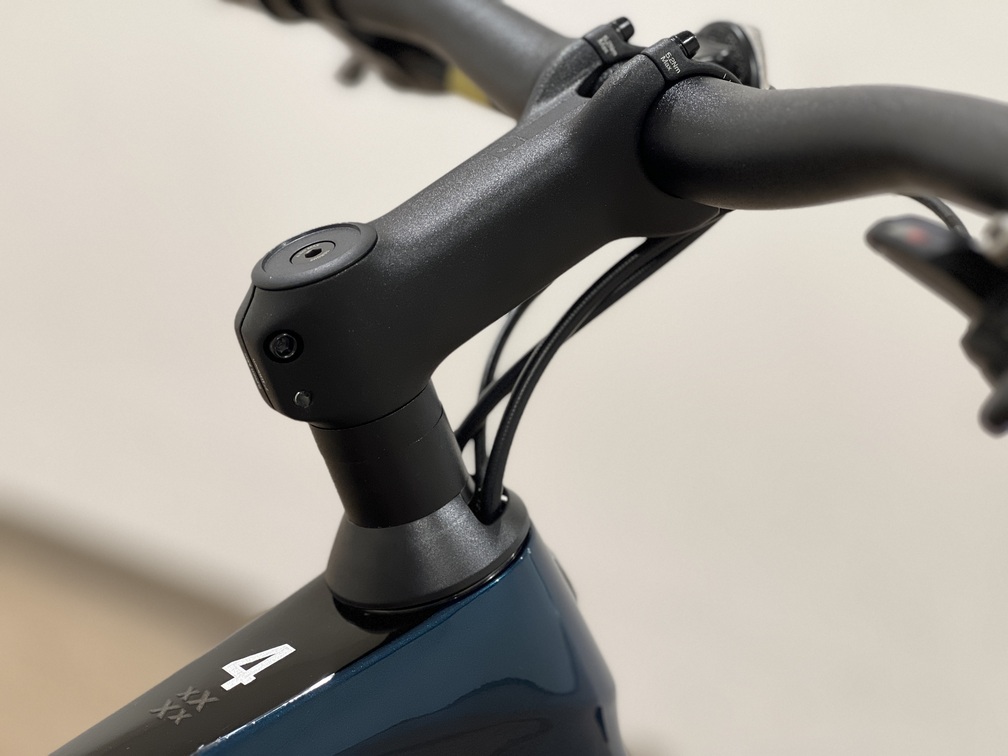
シフトケーブルやブレーキホースはステム下からフレームに内装されていきます。同社のロードバイク、EMONDAやDOMANEなどと同じですね。TREKはリムブレーキのロードバイクの頃からフル内装を手掛けていてノウハウがかなりあるので組み立てやメンテナンスが楽な方ですのでそこも◎。
1×10のシンプルなドライブ
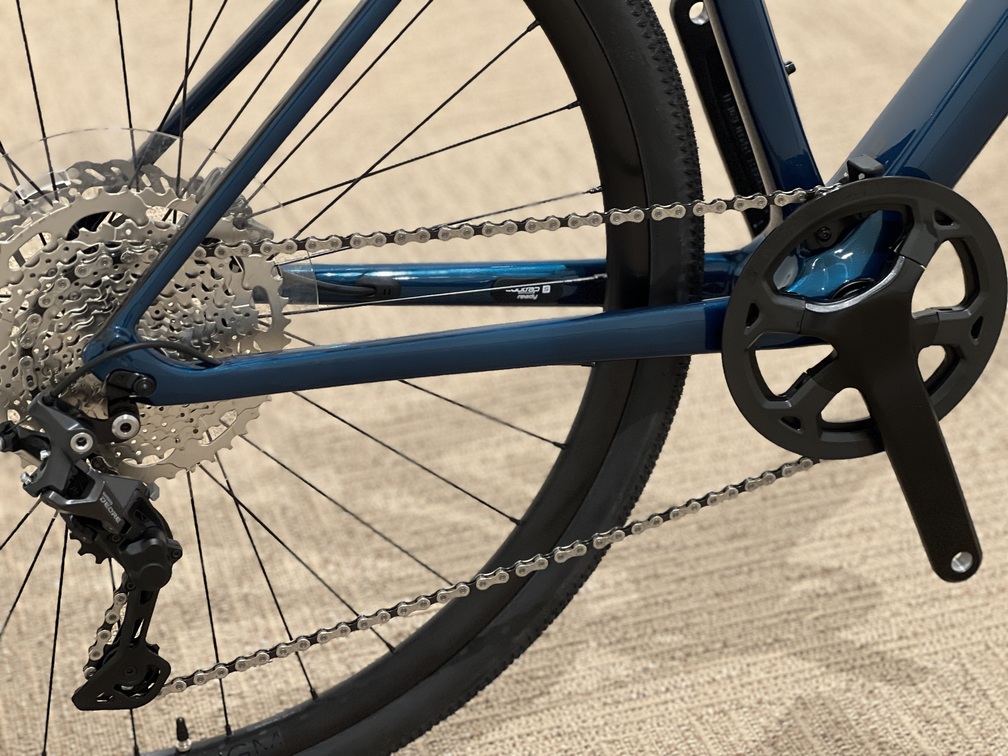
フロントシングルなため複雑なギア操作がなくリアスプロケット11-46T、フロントチェーンリング42Tと変速段数が少なくても幅広いギアレシオ構成なので登りも平坦もしっかりとカバーしてくれます。
油圧ディスクブレーキなので軽い力で強力な制動力を得られます。
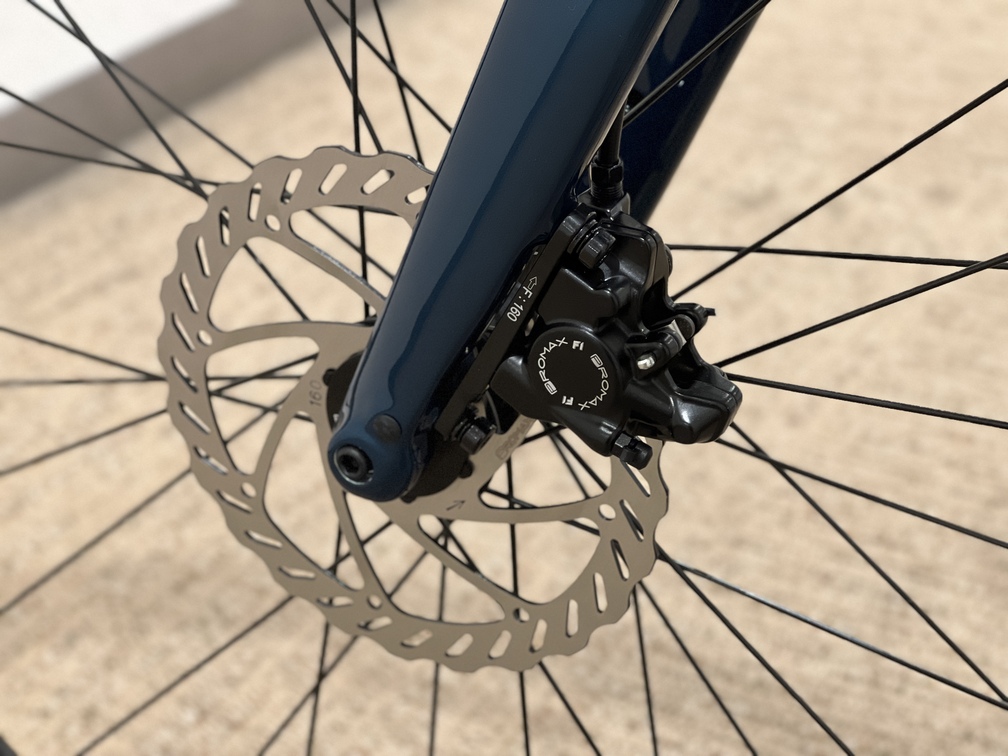
走る場所や環境を選ばない
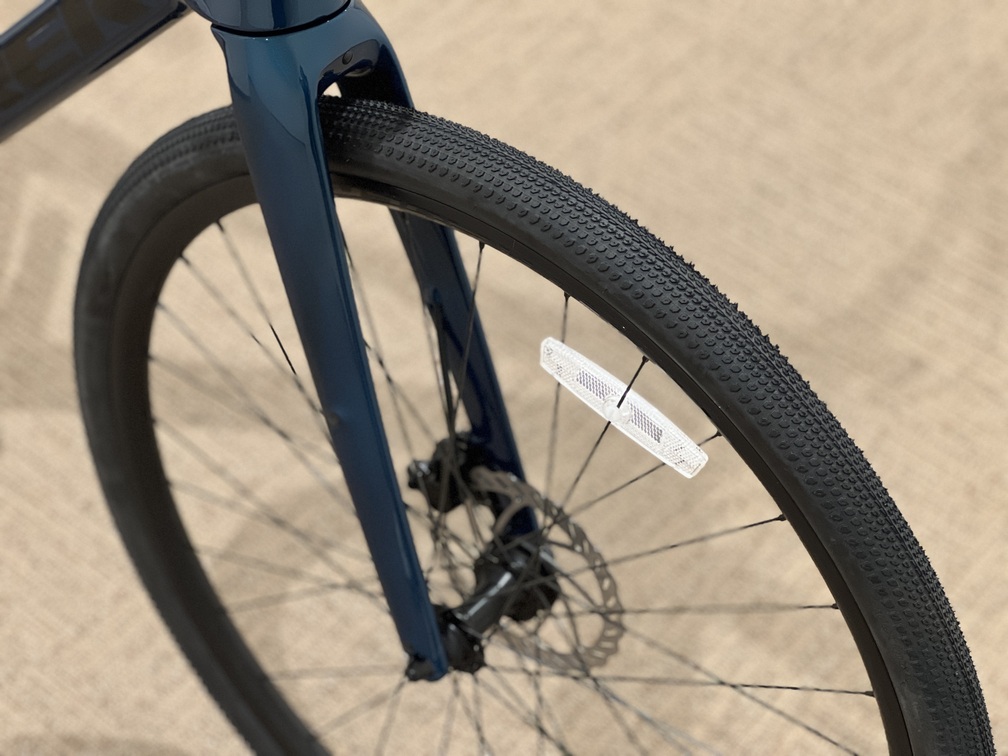
標準でついているタイヤは700×40cの所謂グラベルタイヤです。ノブは高くないので未舗装路だけでなく舗装路でも快適に走ることができます。Bontragerから出ているフェンダーを取り付ける事も可能なので雨の日や雨上がりも安心です。フェンダーを取り付けない場合は最大42cまでのタイヤを使用可能です。
更に通勤通学や街乗り、駐輪時に嬉しいキックスタンドもカーボンフレームでありながら取り付ける事ができます。
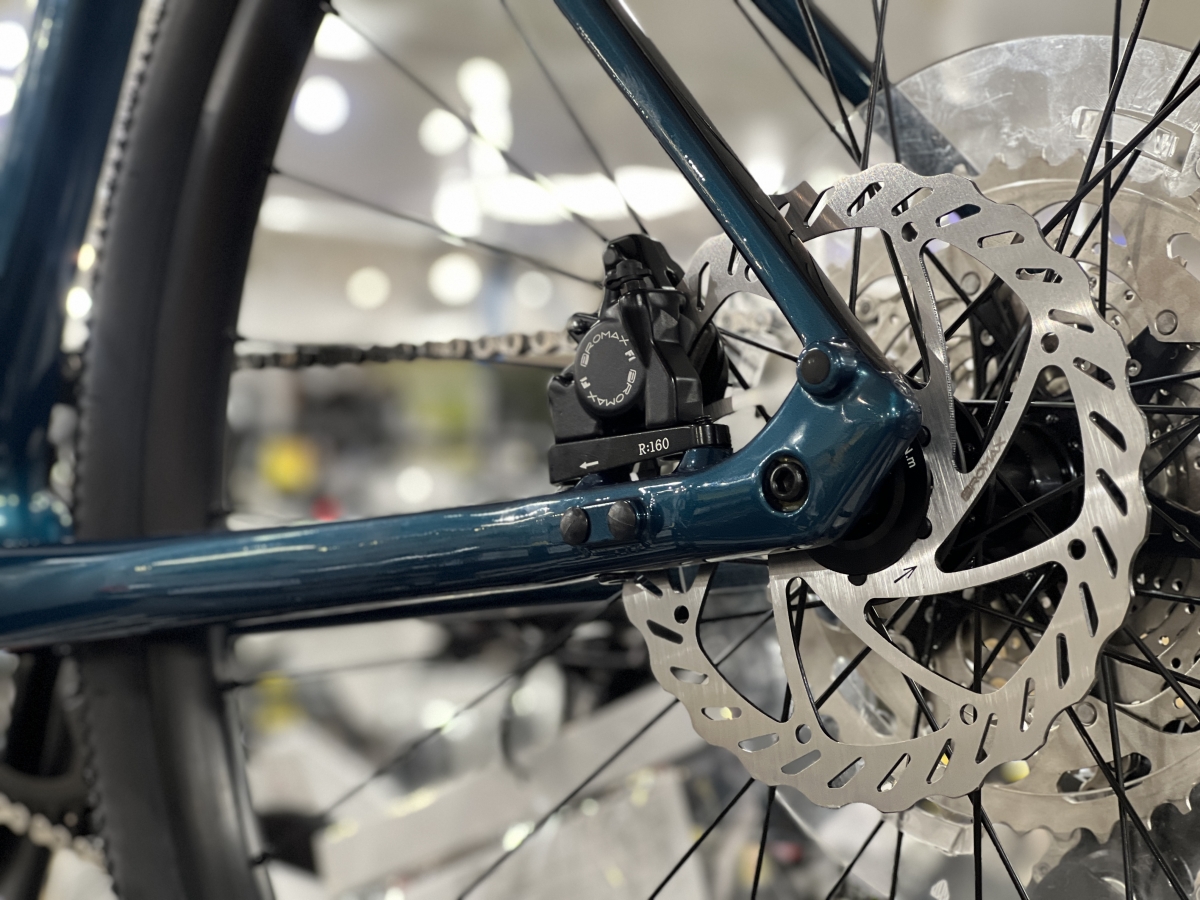
↑写真の台座にBontragerから出ている専用品を装着します。
実はハンドルとグリップも特殊で、手に伝わる振動を減衰し快適なライドを手助けするISO ZONE GRIPを採用しています。
この他にもFXシリーズ在庫しています!
今回のTREK FEST対象のFX1やFX2、カーボンフォークやISO ZONE GRIPを採用したFX3も在庫しています。
是非この機会にTREKのクロスバイクをご検討ください!
それではご来店お待ちしております。
2024/5/4 宮崎
INFORMATIONお知らせ
作業コーナーからお知らせです。.
ただいま修理・メンテナンス・点検などのご依頼を非常に多くいただいております。
出来るだけ多くのお客様をご対応させていただくため、緊急性のある作業 (チューブ交換、シフト調整、ブレーキシュー交換、インナーワイヤー交換など) を優先的にご対応させて頂いております。
作業内容によってはしばらく先のご予約となる場合がございます。
ご不便ご迷惑おかけいたしますが、何卒よろしくお願い申し上げます。
ワイズロード横浜店のご紹介
ワイズロード横浜店はオールジャンルを取扱うスポーツバイクの専門店です。完成車を中心に豊富な取扱量があり、様々なブランドの取寄せが可能です。スポーツバイク選びに困ったらワイズロード横浜店が便利です!
ワイズロード横浜店へのアクセス方法
横浜ワールドポーターズ 駐輪駐車場は 9F 駐車場サービスございます。
ワイズロード横浜店住所
所在地:神奈川県横浜市中区新港二丁目2番1号 横浜ワールドポーターズ6階 電話番号:045-263-6342 営業時間:12:00~20:00 定休日:なし http://ysroad.co.jp/yokohama/

ワイズロード横浜ワールドポーターズ店
Y'sRoad yokohama
※ブログの商品情報は掲載当時の情報です。 完売していたり、価格やポイント還元率、商品の仕様が変更されていることもありますので、予めご了承ください。 在庫状況等の最新情報は、大変お手数ですが店舗へお問い合わせください。
▸ プライバシーポリシー
Copyright c Y.International inc. All rights reserved

IMAGES
VIDEO
COMMENTS
Trek Émonda: Lightweight Yet Aero Racing Bike Trek Émonda. Émonda is a lightweight road bike designed for racing. It has more performance geometry than Domane.. It's not as aero as Madone, but more aero than Domane. It's also lighter, making it ideal for climbing and riders who want an agile bike.. Since the 2021 redesign, it can be classified as a hybrid road bike (lightweight yet aero ...
Trek Domane Compared to Emonda in Detail. Let's break down the above table below: 1. Bike Type. Trek Domane is an endurance road bike, while Trek Emonda is a race bike. The difference is that an endurance road bike is for riding further on different road surfaces, while a race bike is designed for racing on-road. 2.
The short answer. - The Emonda is a lightweight race bike for cyclists who like to go fast and ride aggressively. The lightness of Emonda is perfect for climbing because lighter bikes require less effort to get your bike up hills. - The Madone is a bit heavier than the Emonda but has an aerodynamic design that makes this bike great for flat ...
The Trek Domane and Emonda bikes are both excellent options for cyclists looking for a lightweight, incredibly durable bikes. The Domane is designed with a more aerodynamic frame, making it the perfect choice for riders who want to achieve high speeds. The Emonda, on the other hand, is built for comfort and stability.
A Man Riding on a Trek Emonda (Trek Domane Vs. Emonda) Trek is one of the top bike manufacturers in the world, and the brand is responsible for designing a few high-end bikes that often compete at the world tour level.. Trek specializes in designing road bikes for the most part, and they are known for their UCI team that competes in world tours.
In Trek's line, the new Émonda's aerodynamic performance is equal to the third generation Domane; the Madone is still significantly more aero. But while the more aerodynamic Madone is faster ...
The Trek road bike range consists of three models (which amusingly are anagrams of each other 😉): Madone, Domane, and Emonda. The Trek Madone is the brand's aero star bike. In its recent versions, it features IsoFlow technology, a surprising cavity under the seat tube intended to improve aerodynamic penetration.
Specs. Domane SL 5 2021 Trek. Émonda SL 5 2021 Trek. Frame. 500 Series OCLV Carbon, front and rear IsoSpeed, internal storage, tapered head tube, internal cable routing, 3S chain keeper, DuoTrap S-compatible, mudguard mounts, flat-mount disc, 142x12 mm thru axle. BB Standard: T47, Threaded.
Trek Domane 4/5. Weight may not be the primary concern with the Domane, and with Trek's IsoSpeed technology showcased both front and rear, it's no surprise that it's carrying a few extra grams compared to the Emonda. With that being said, it's no lead weight! Utilising Trek's OCLV 700 Series carbon, the SLR model equipped with 12-spd ...
Trek Emonda has integrated disk brakes with Shimano R505 calipers while Trek Domane has mechanical disk brakes with alloy calipers. The Shimano 5800 shifter and derailleur in Trek Emonda is also another one of its unique physical features that make it different from Trek Domane which has the older version, Shimano 105 shifter and derailleur.
The Trek Domane SL 6 and Trek Émonda SL 6 are both carbon frame road bikes with high-end components and hydraulic disc brakes. The Émonda SL 6 has higher gearing. ... Emonda SL full carbon, tapered carbon steerer, internal brake routing, flat mount disc, 12x100mm thru axle. Bottom Bracket. Praxis, T47 threaded, internal bearing.
Trek Website: https://bit.ly/3OGJp4eWelcome to my first Trek road bike comparison!! This video describes all the main differences among the 2022 Trek Domane,...
Regarding trekking bikes, the Trek Domane vs Emonda comparison is a tough one to win. Both bikes are great for various uses, but the Trek Domane has a sturdier frame, making it better for trail riding. Additionally, the Emonda is a great option for beginners or commuters who want an upgrade from their standard bike. It's also affordable ...
If you are looking to get a Trek road bike but not sure which one, then this video is for you! In this video we compare the 2022/2023 Trek Domane, Trek Emond...
In the realm of Trek road bikes, the choice between Emonda, Madone, and Domane encapsulates the diverse desires of road cyclists. The Emonda's lithe build beckons speed enthusiasts, infusing ascents with an air of conquest. The Madone, boasting aerodynamic excellence, invites those enamored with flat speed while surprising riders with its ...
Trek prices the Émonda ALR at $2,300 for the complete bike and $1,200 for the frameset. ... (But for reference, a 12-speed 105-equipped Domane AL 5 sells for $2,000) Ride Impressions.
Trek bikes: Bike reviews,Domane,Emonda,Madone: Price points: ... The Trek Domane - available as a men's build or with women's specific componentry - is a fast selling model, which comes in a range ...
The Trek Emonda is a lightweight bike for the high mountains. The lightest Trek Emonda frame weighs less than 700g using Trek's OCLV 800 carbon. This is the bike Richie Porte rode to his third place in the 2020 Tour de France. The SLR is the lightest and most expensive atop the Trek Emonda models. There are six Emonda SLR options, specced ...
Émonda is the lightest road bike in our lineup and the first up every climb. We scrutinized every inch of this legendary race bike to offer ultimate ride quality and balanced handling without compromising weight. Complete with fast and light aerodynamic tube shaping, Émonda helps riders go faster than ever on flats and climbs alike. TK23 MARQ ...
Heart of a road bike. Spirit of adventure. Domane is a performance road bike that delivers incredible endurance comfort without sacrificing speed. Wherever you ride it - paved roads, hard-packed gravel, or the cobblestones of the world's greatest one-day races - the Domane family is smooth, fast, and fun.
Performances. La principale différence entre le Trek Emonda et le Trek Domane, c'est le niveau de performances. Au guidon de l'Emonda dans un col, vous comprendrez rapidement que la seule limite sera votre condition physique. Sa conception lui permet de tirer parti de chaque coup de pédale pour limiter au maximum les pertes de watts.
同社のロードバイク、emondaやdomaneなどと同じですね。trekはリムブレーキのロードバイクの頃からフル内装を手掛けていてノウハウがかなりあるので組み立てやメンテナンスが楽な方ですのでそこも 。 1×10のシンプルなドライブ